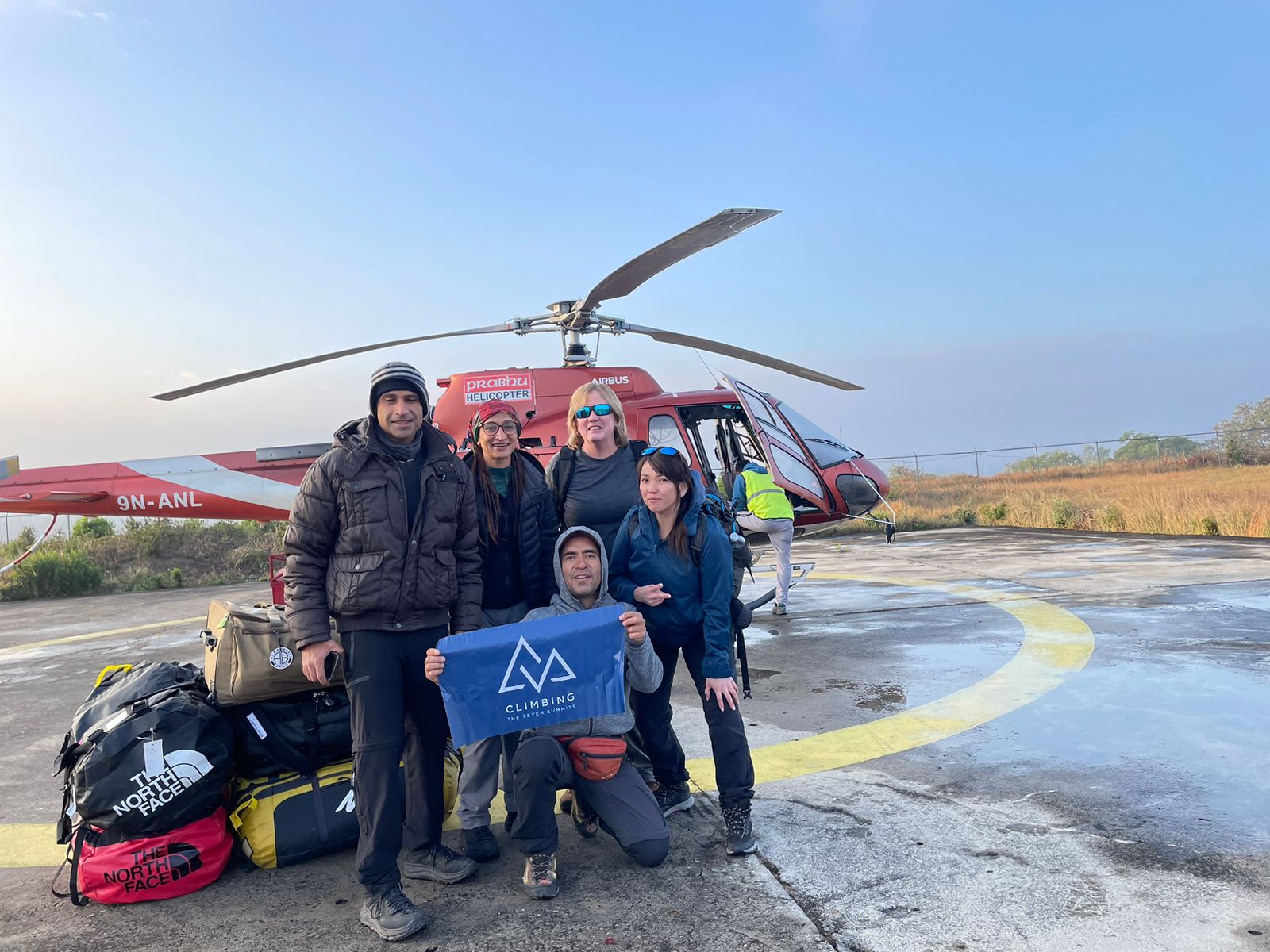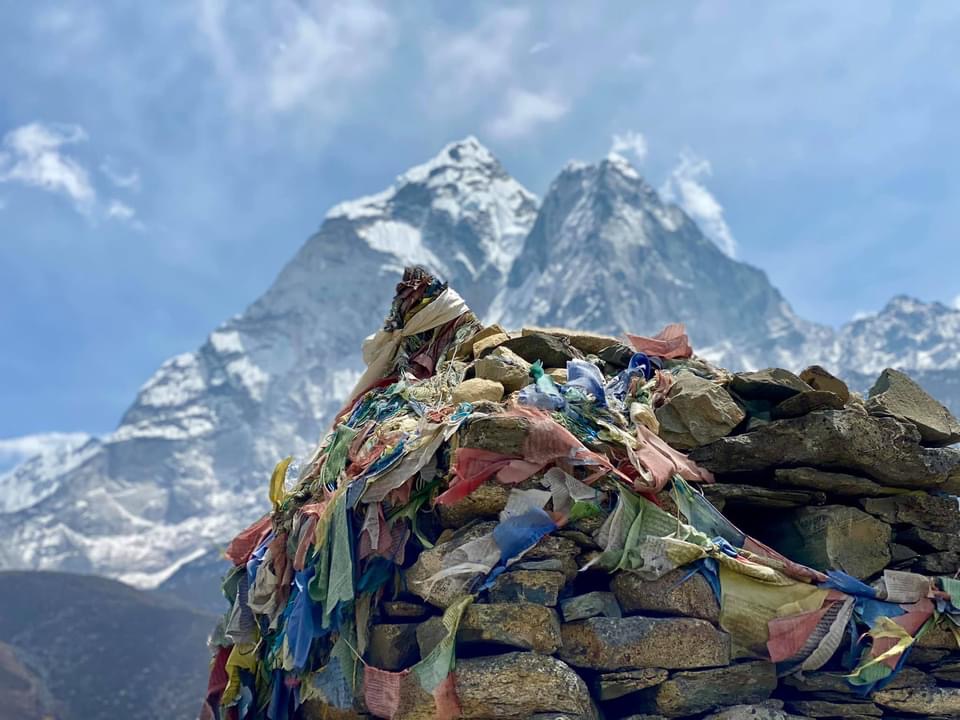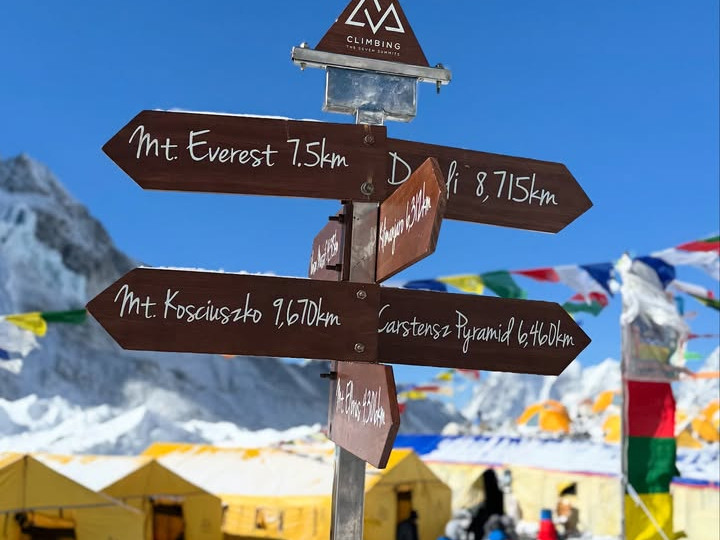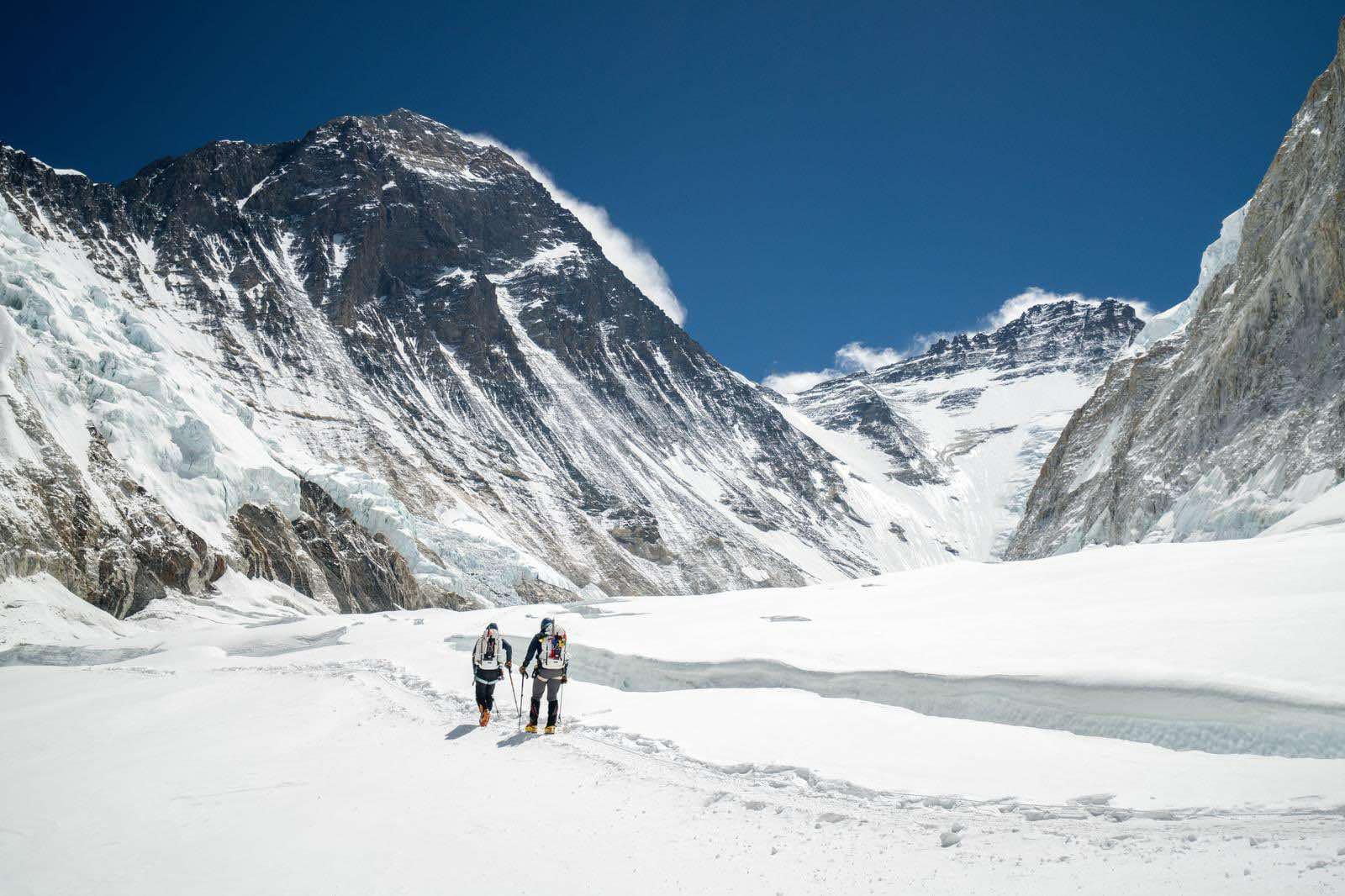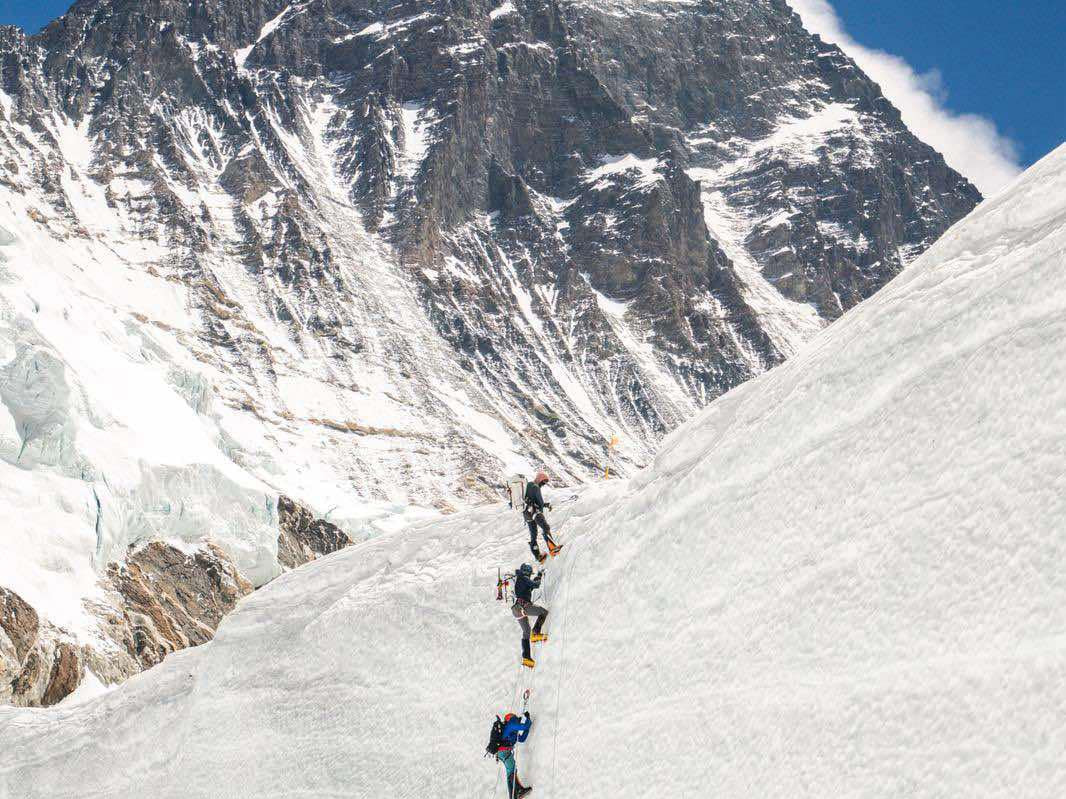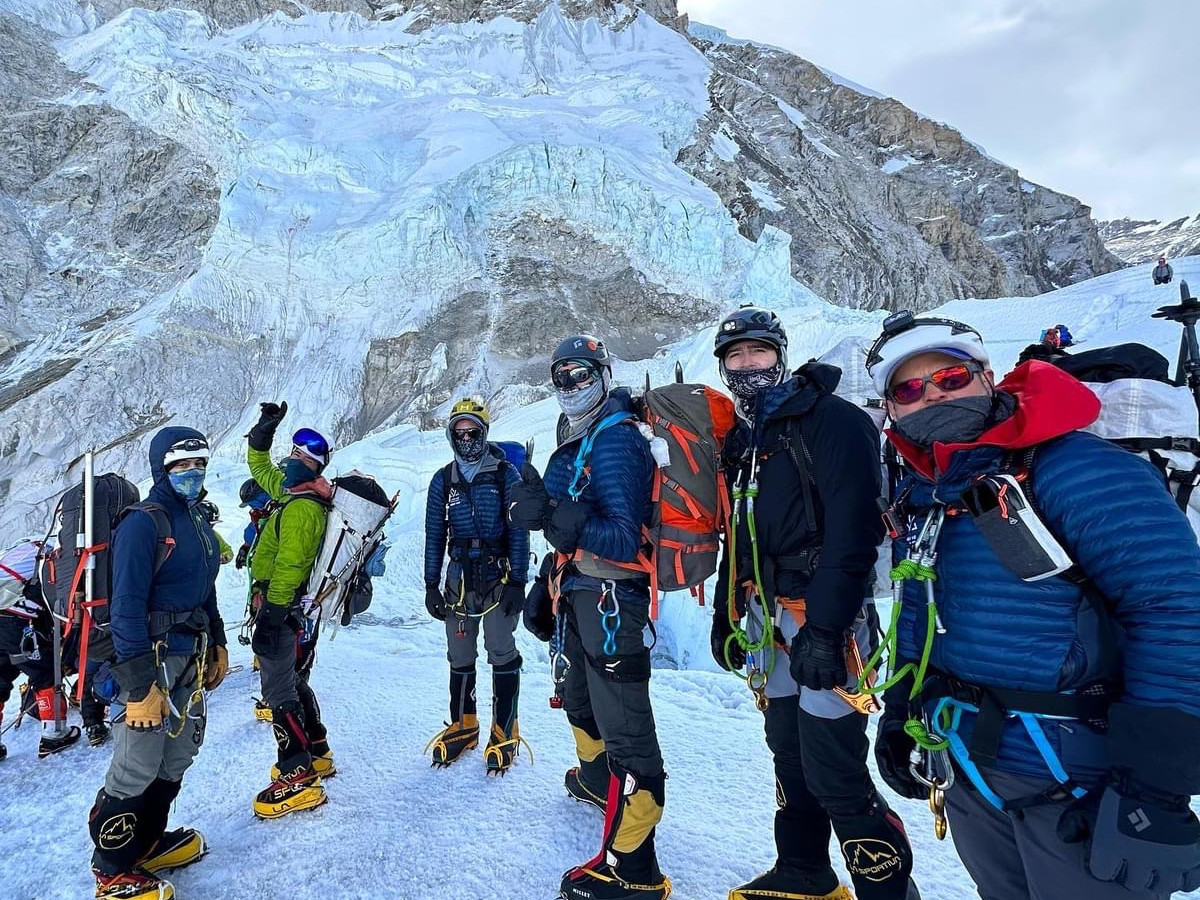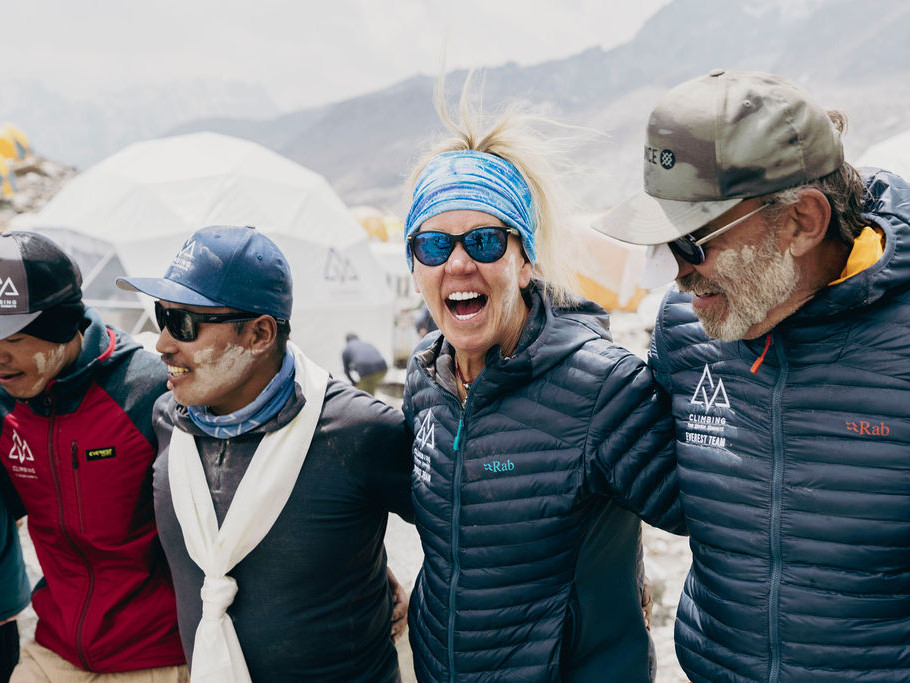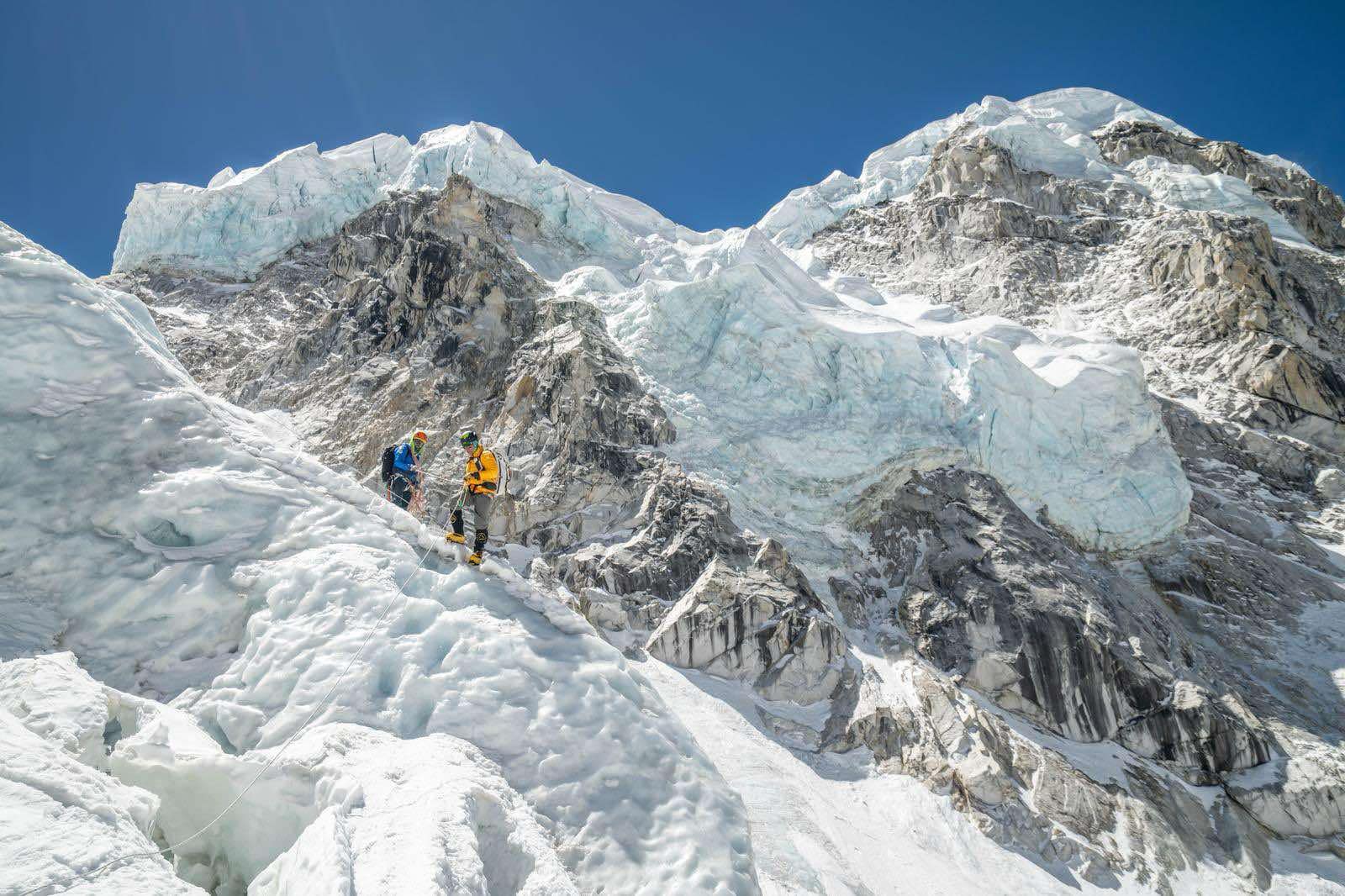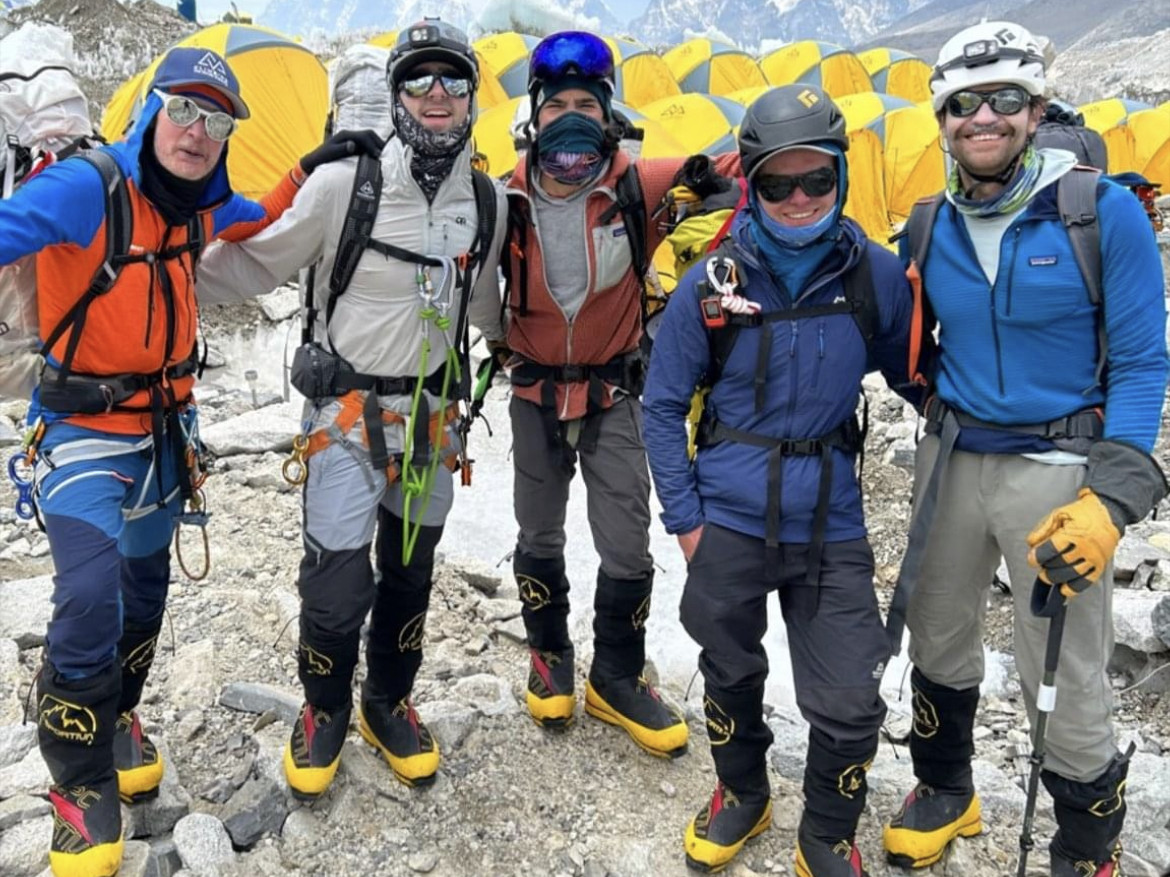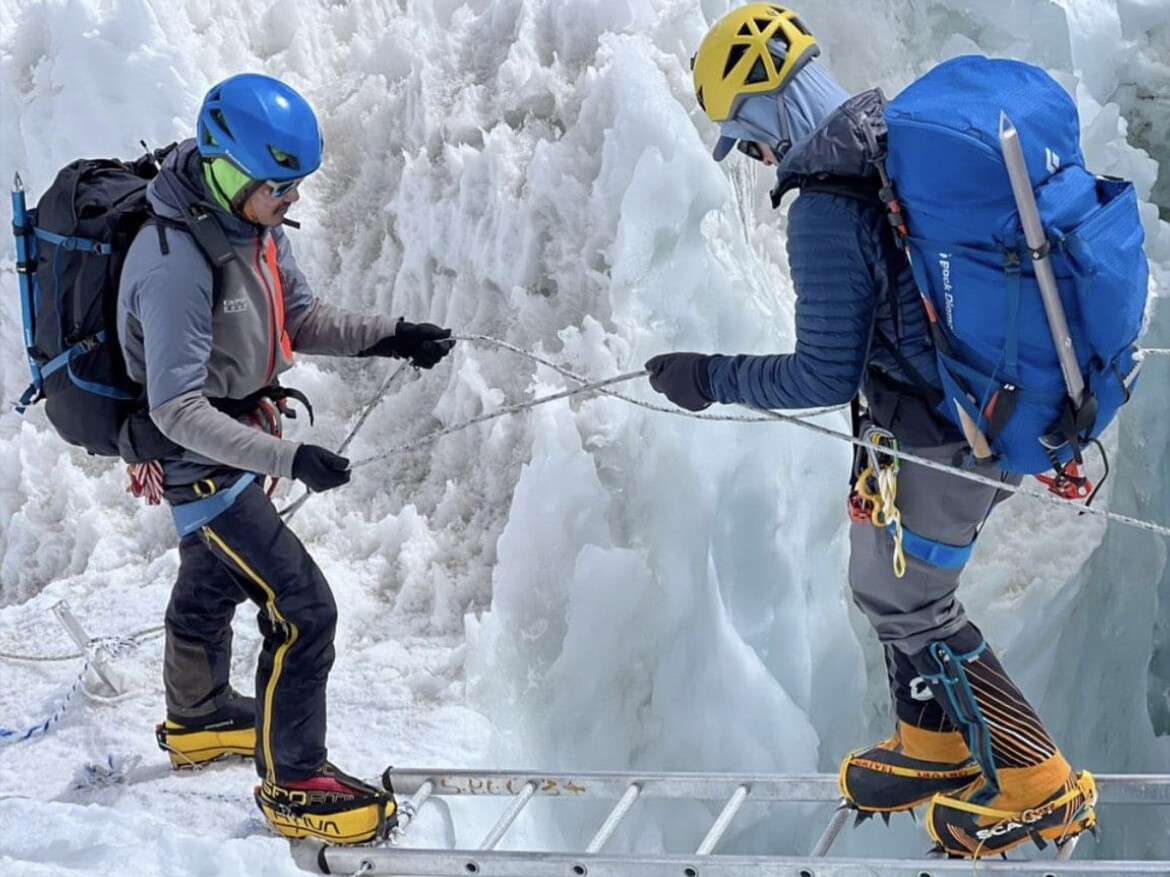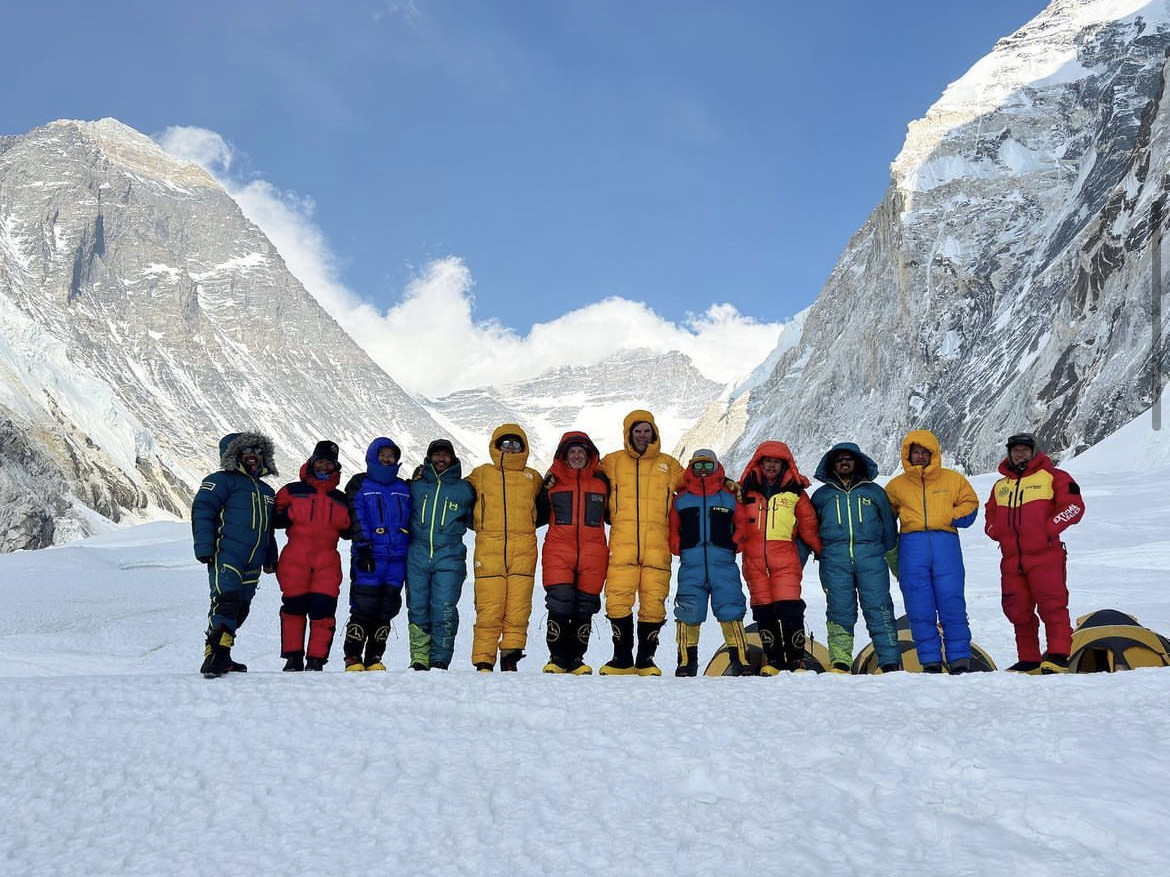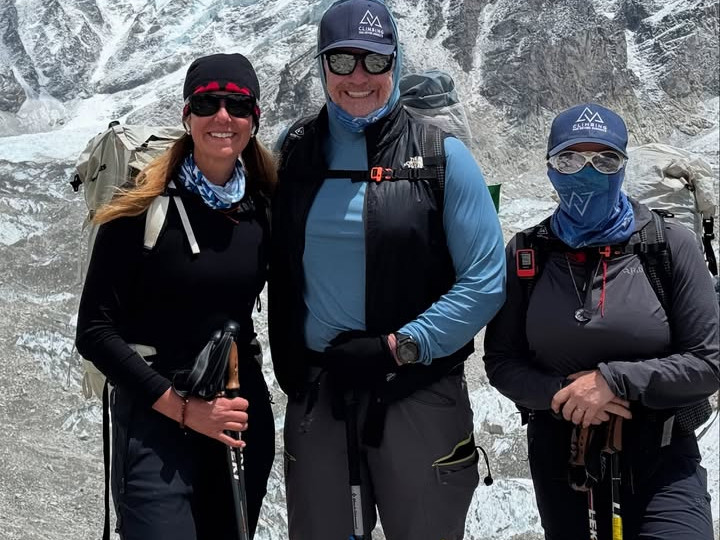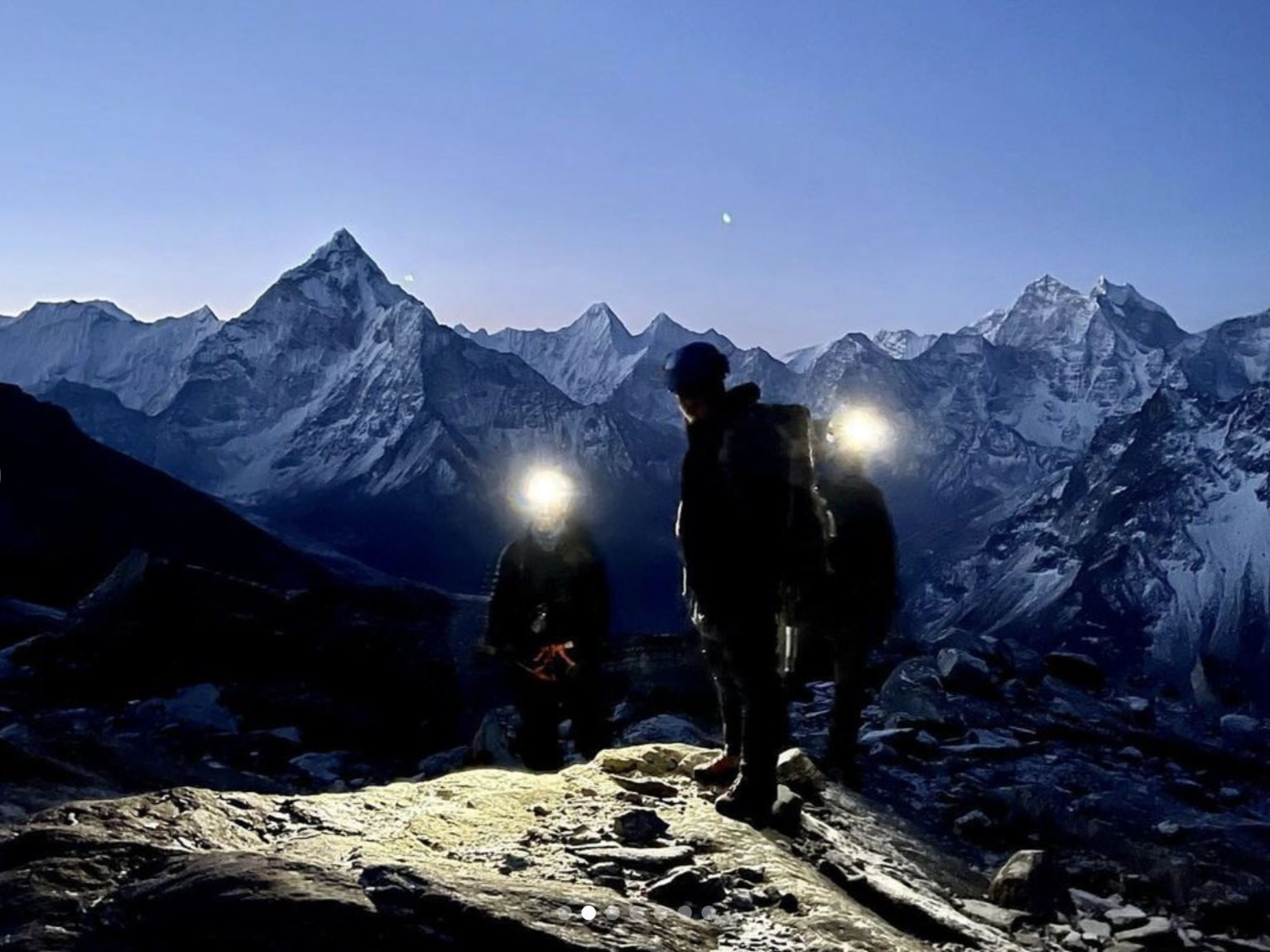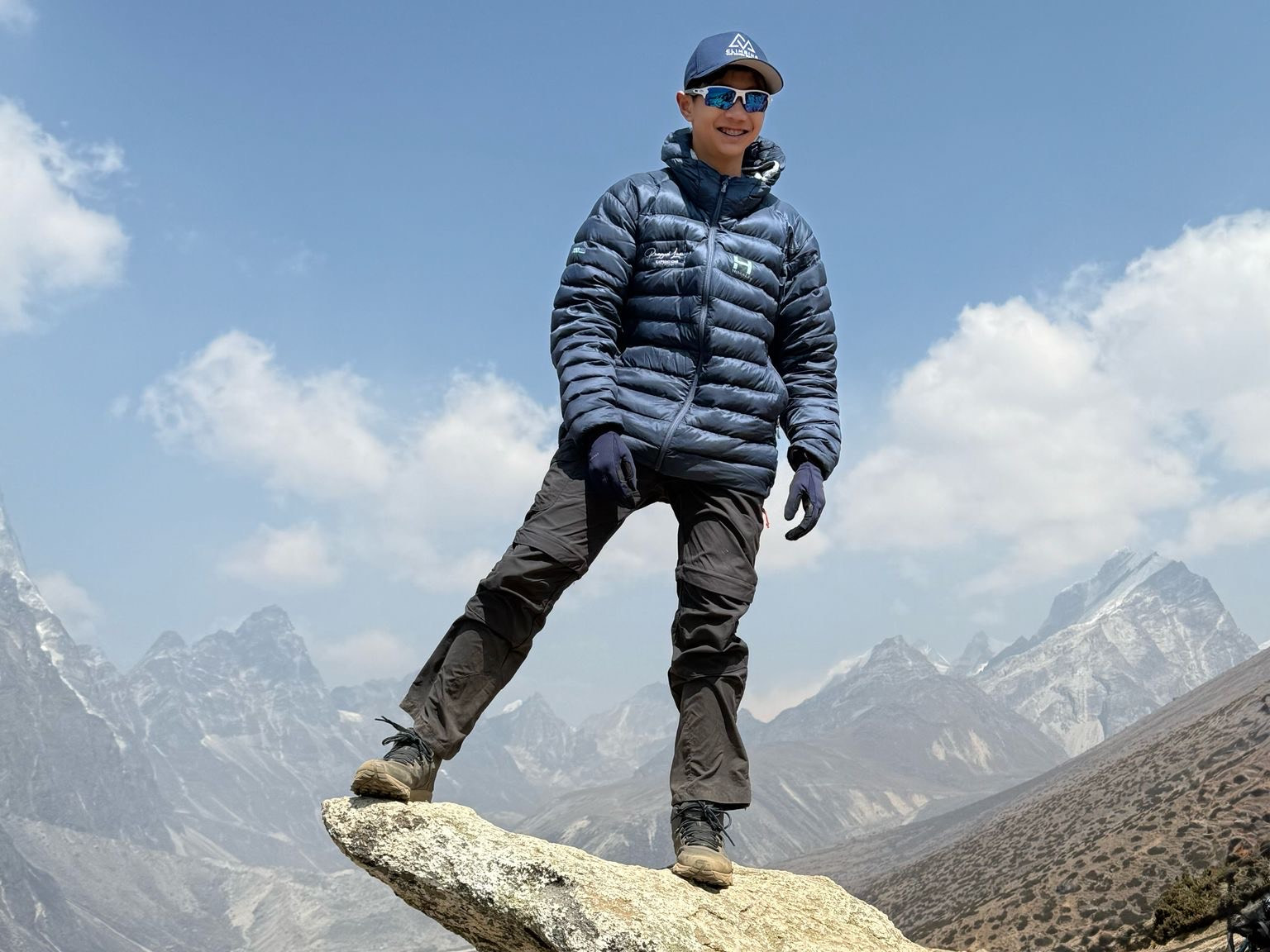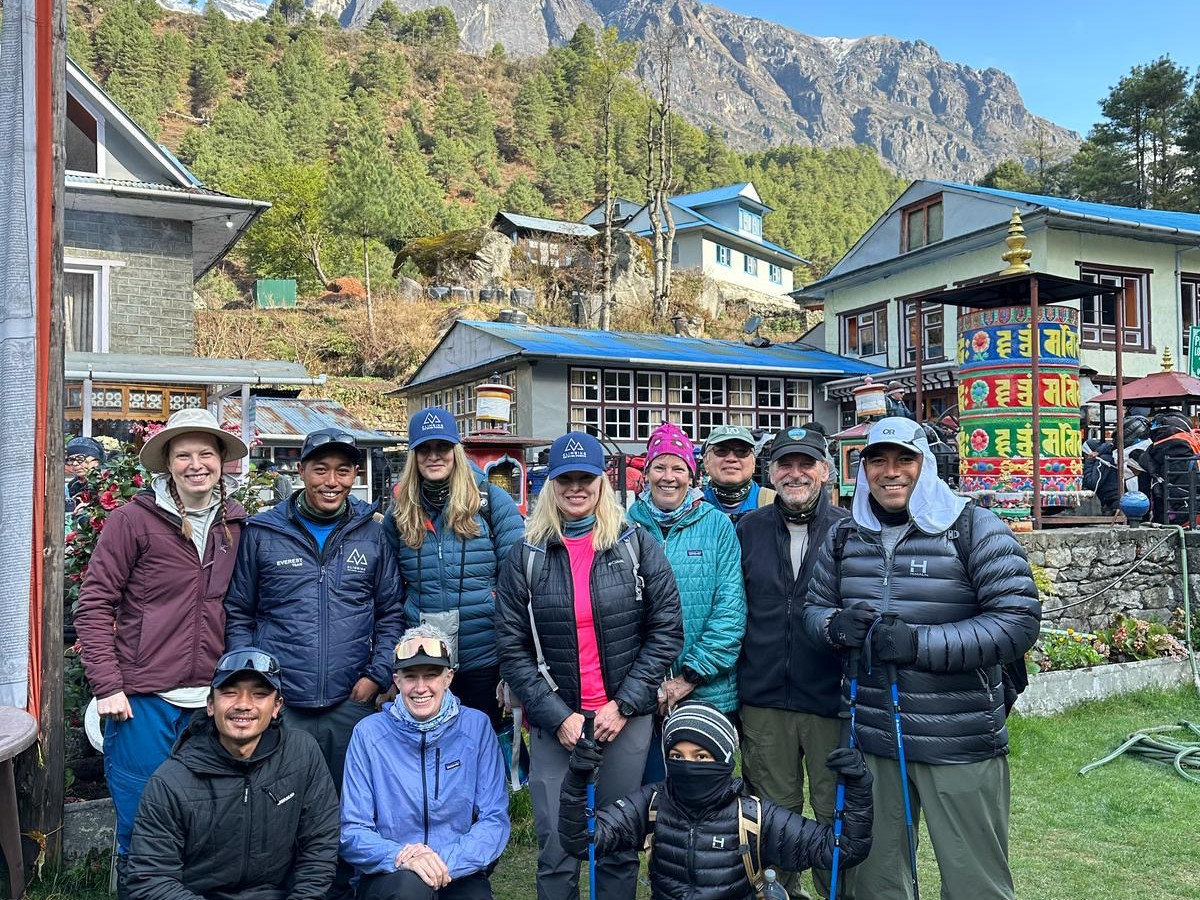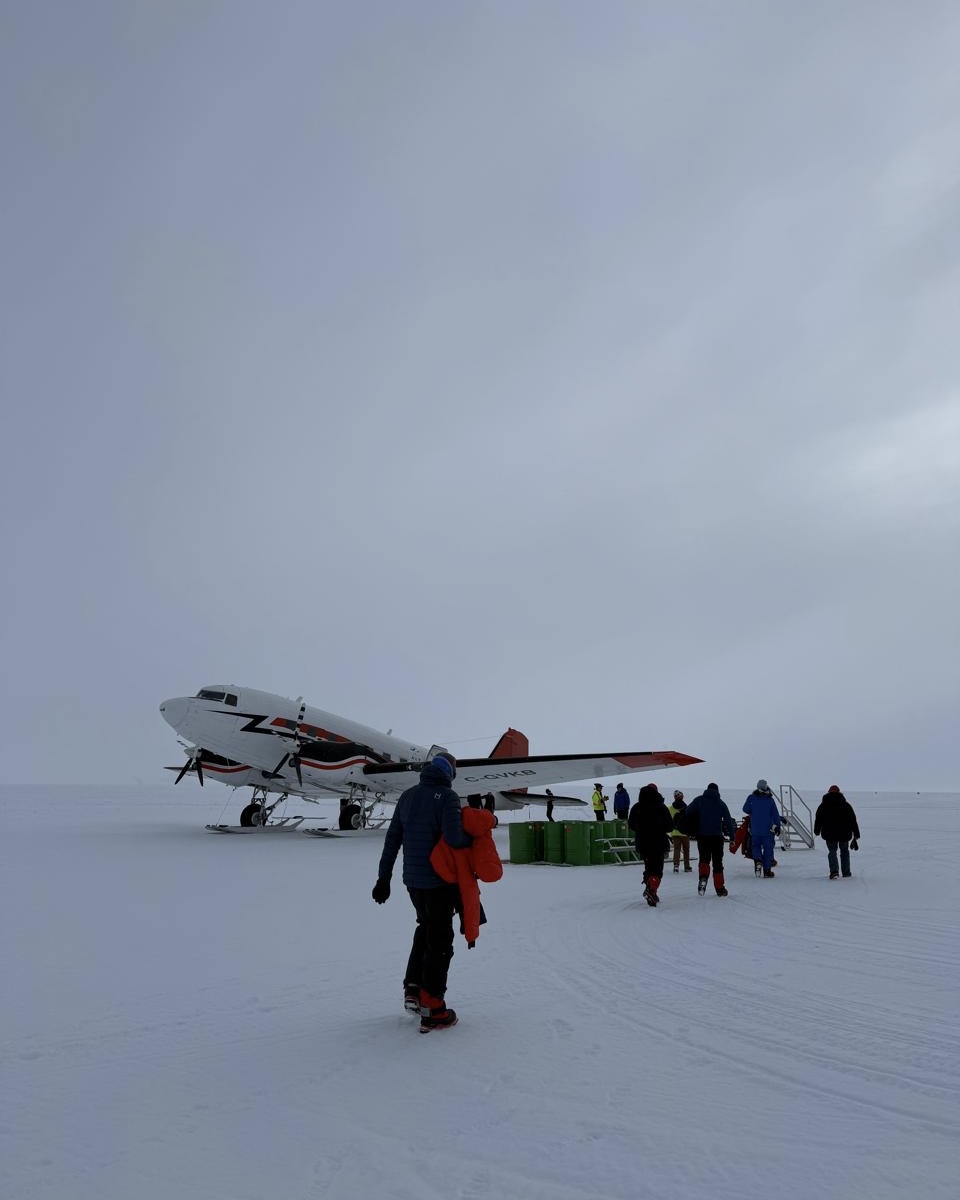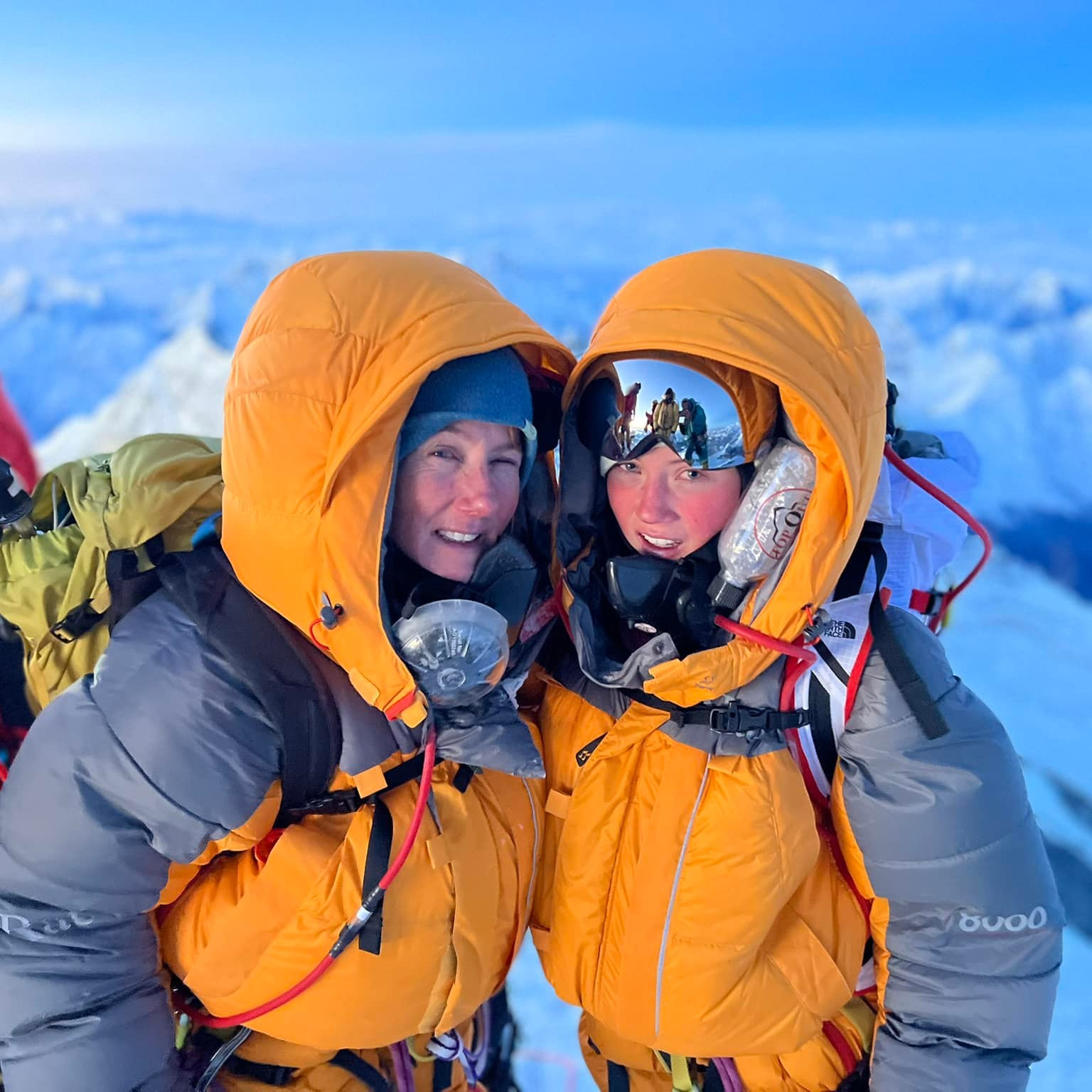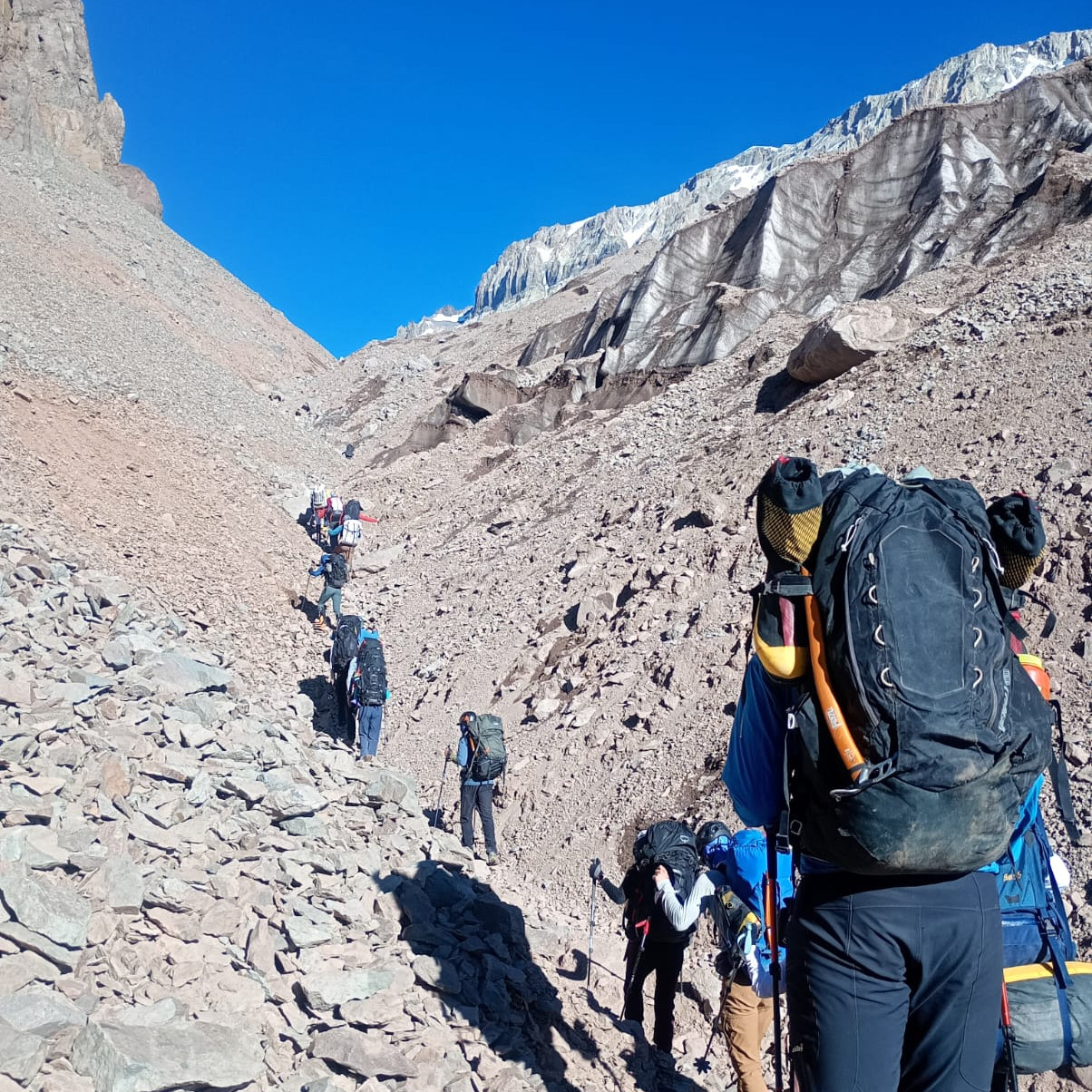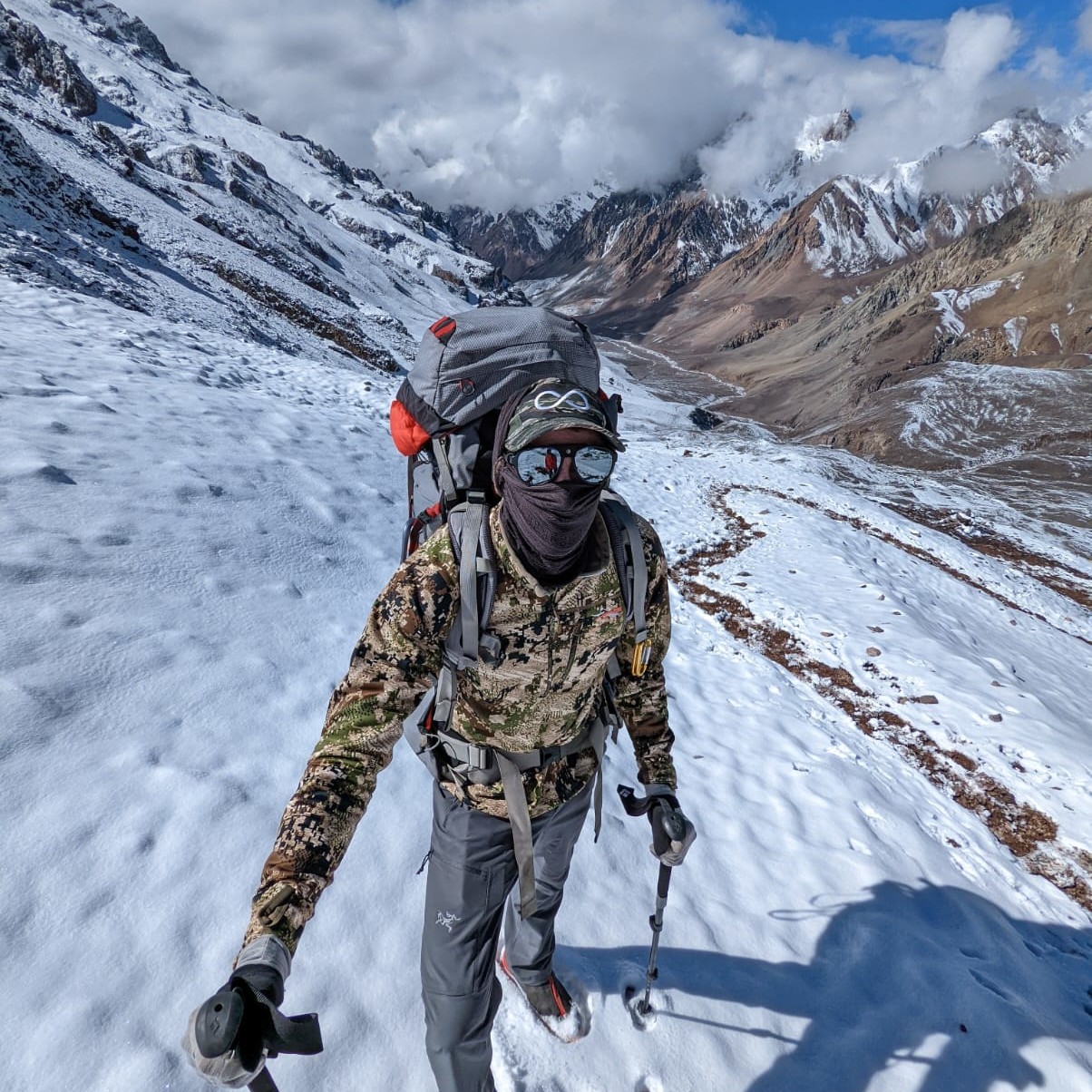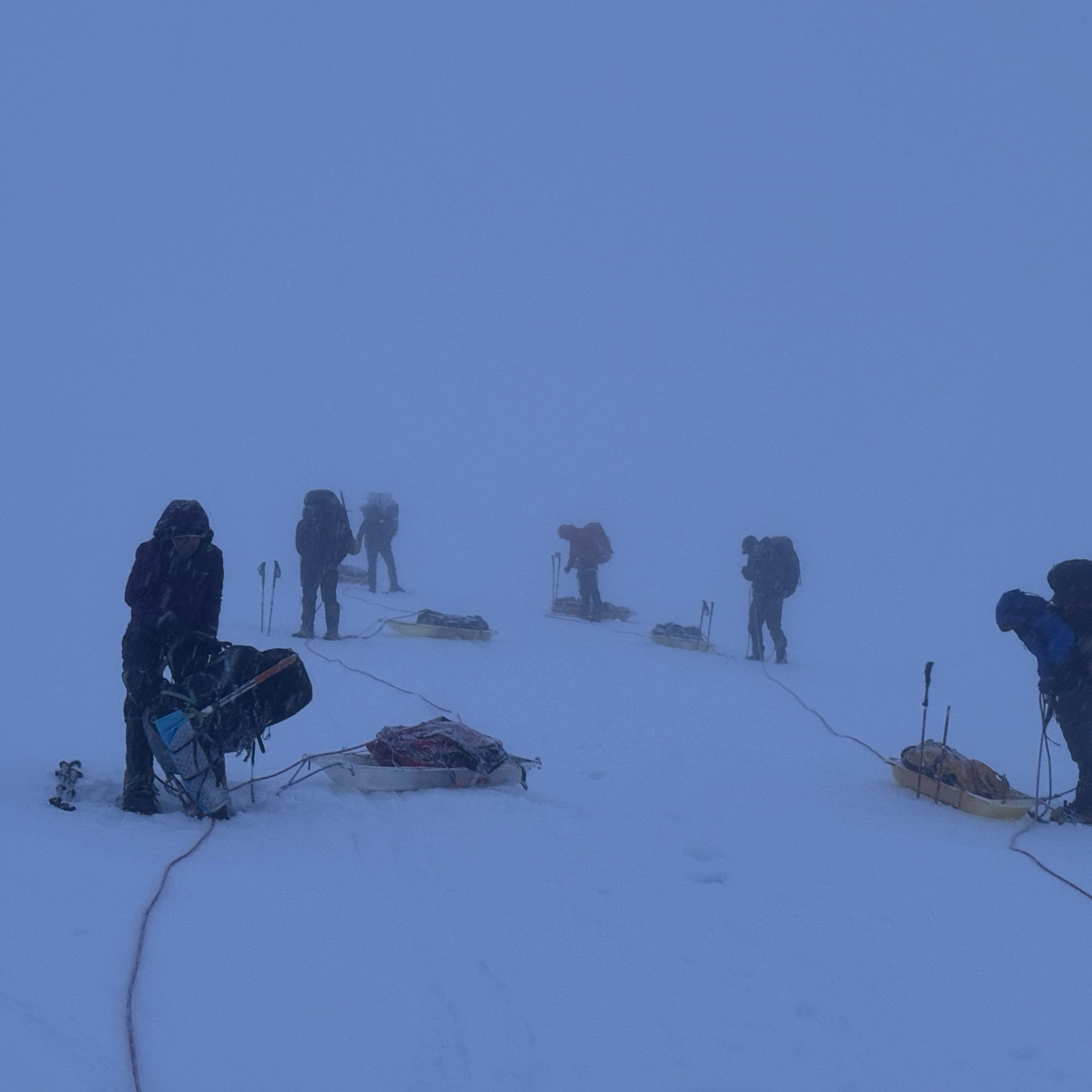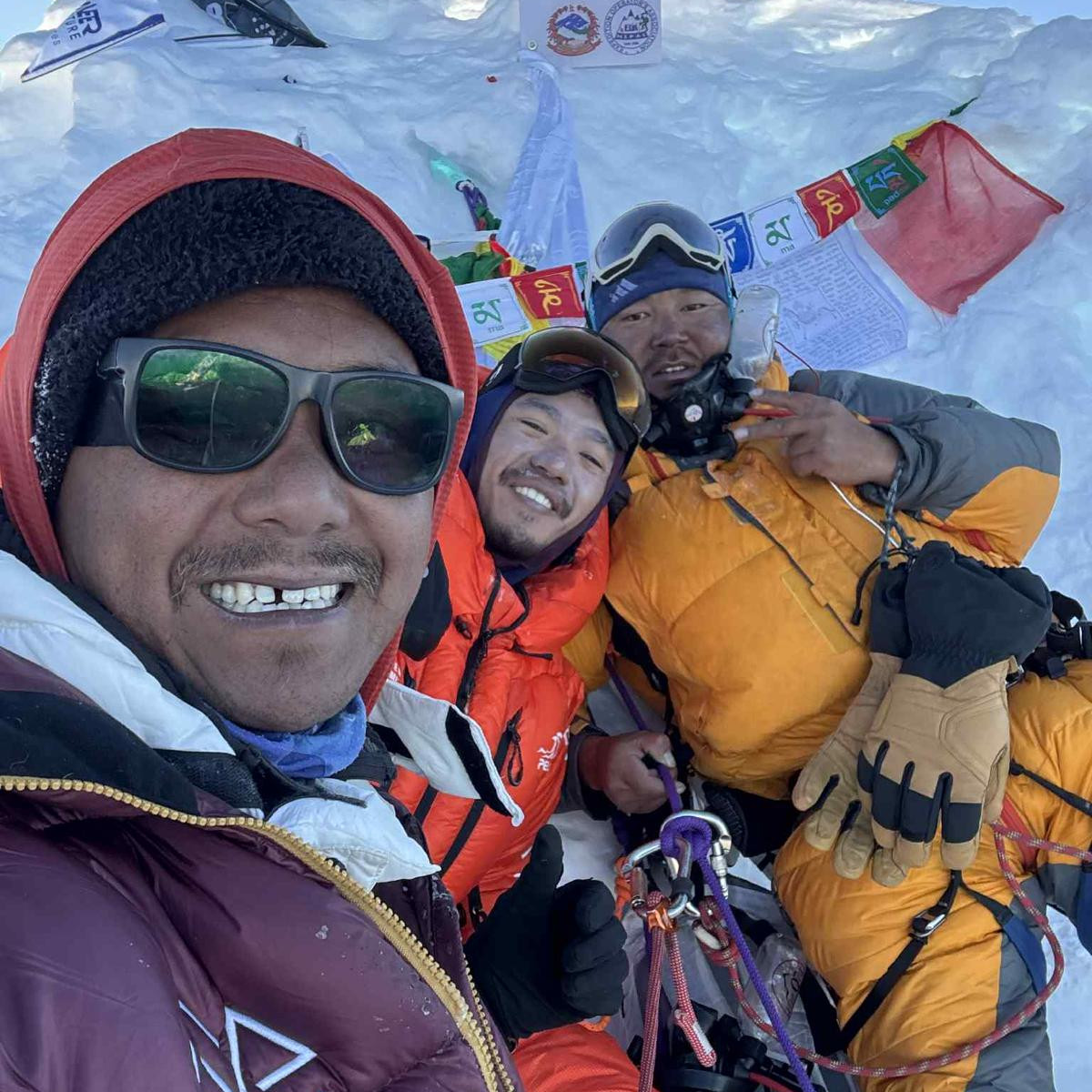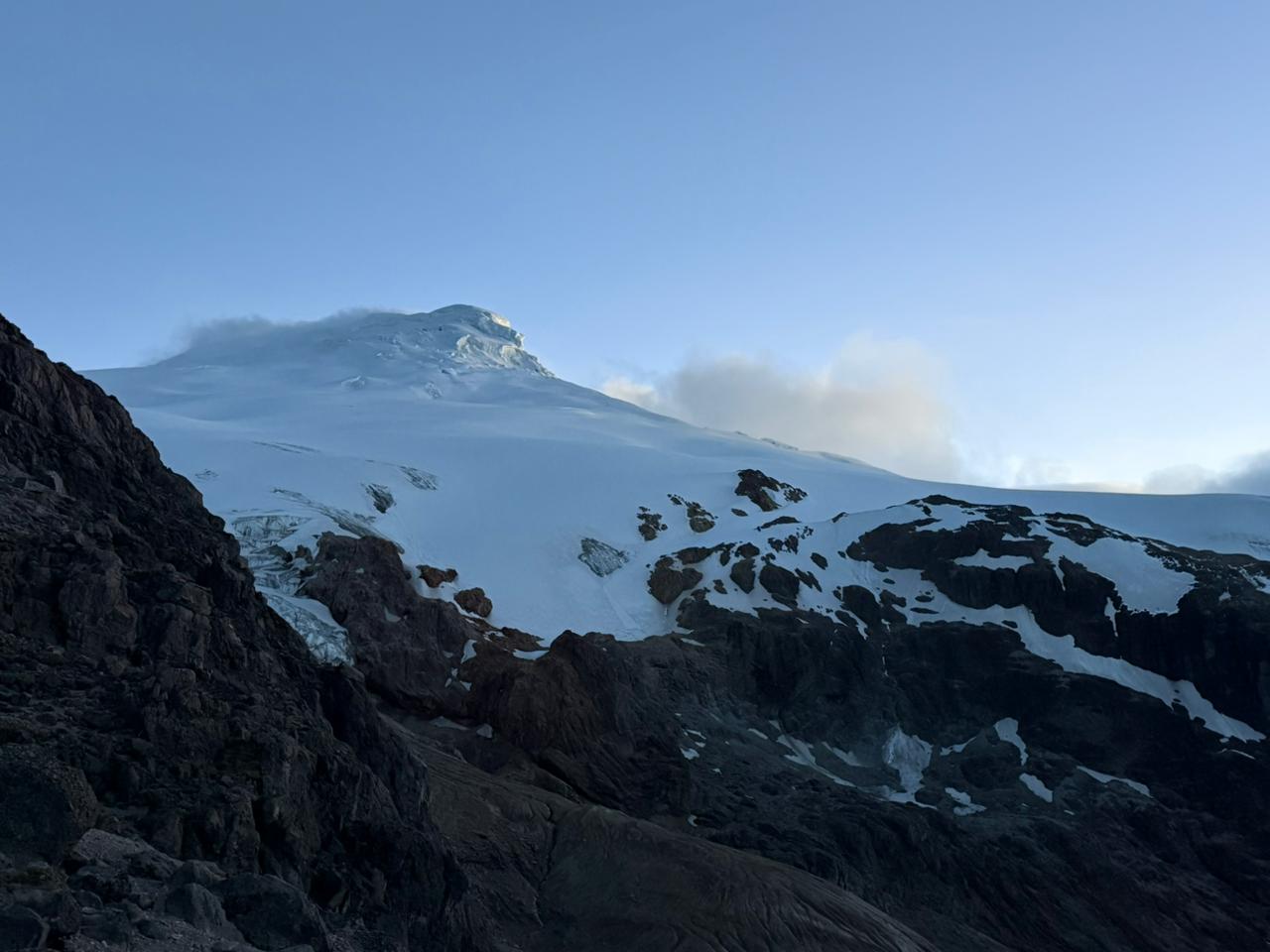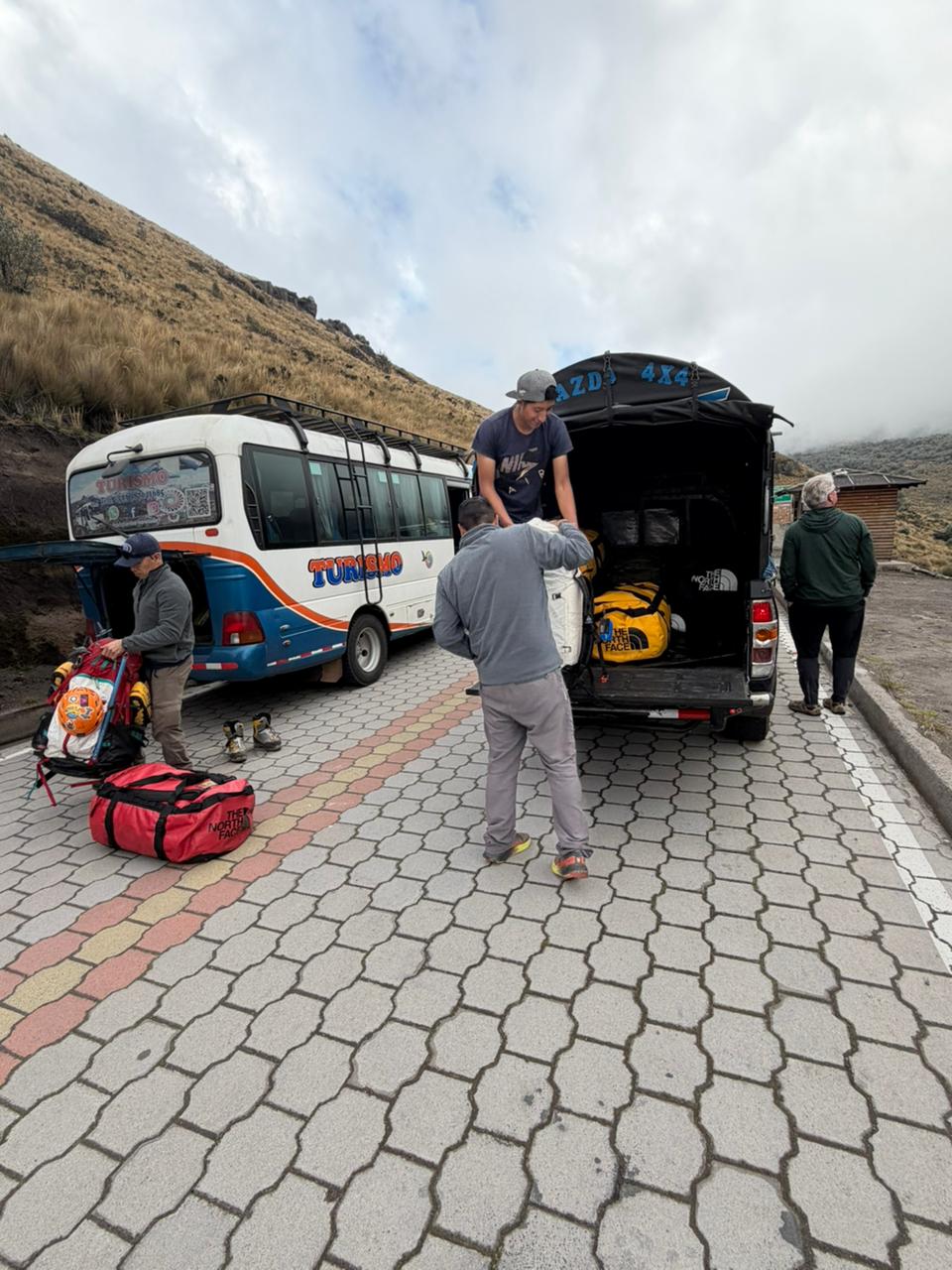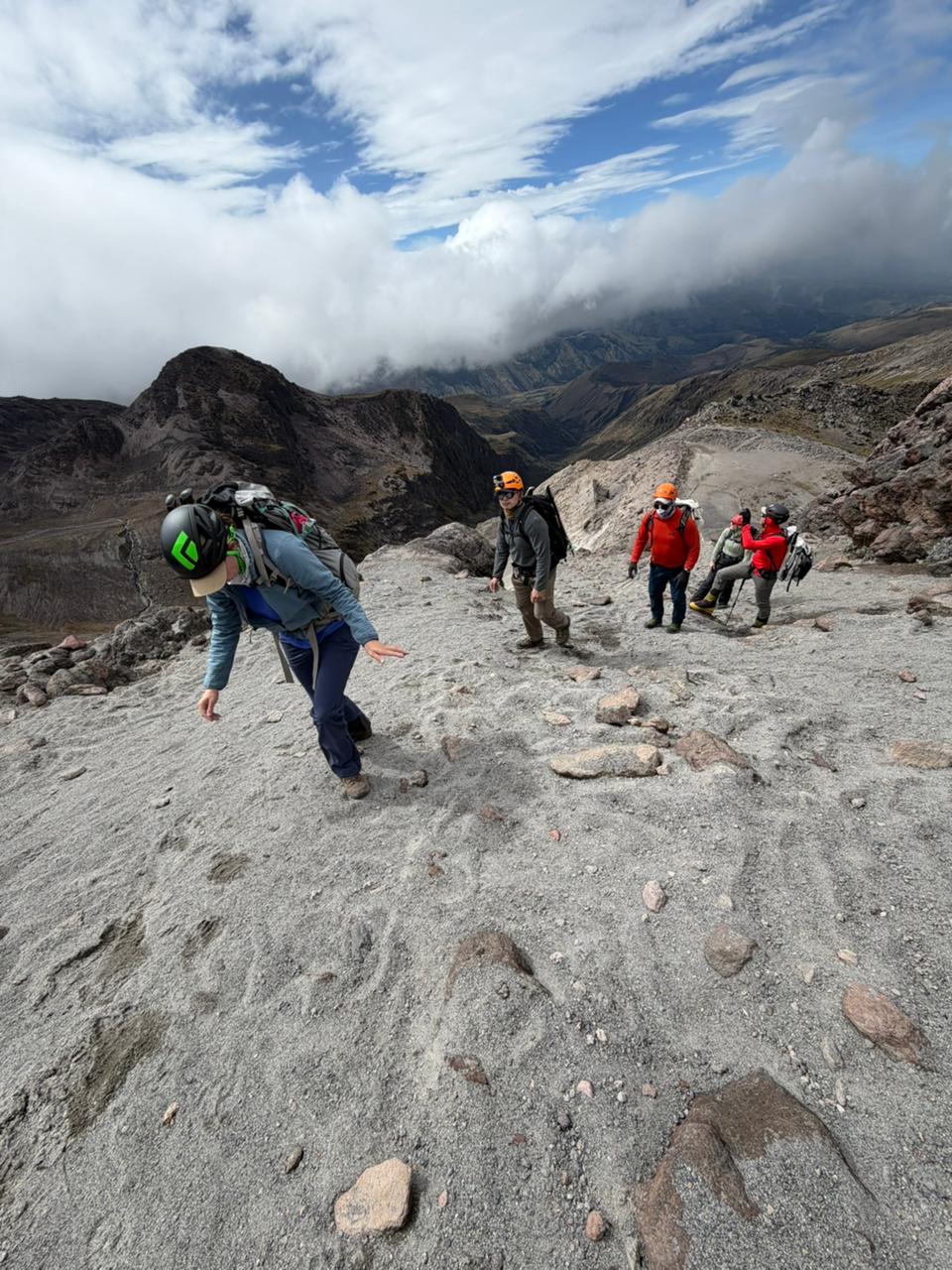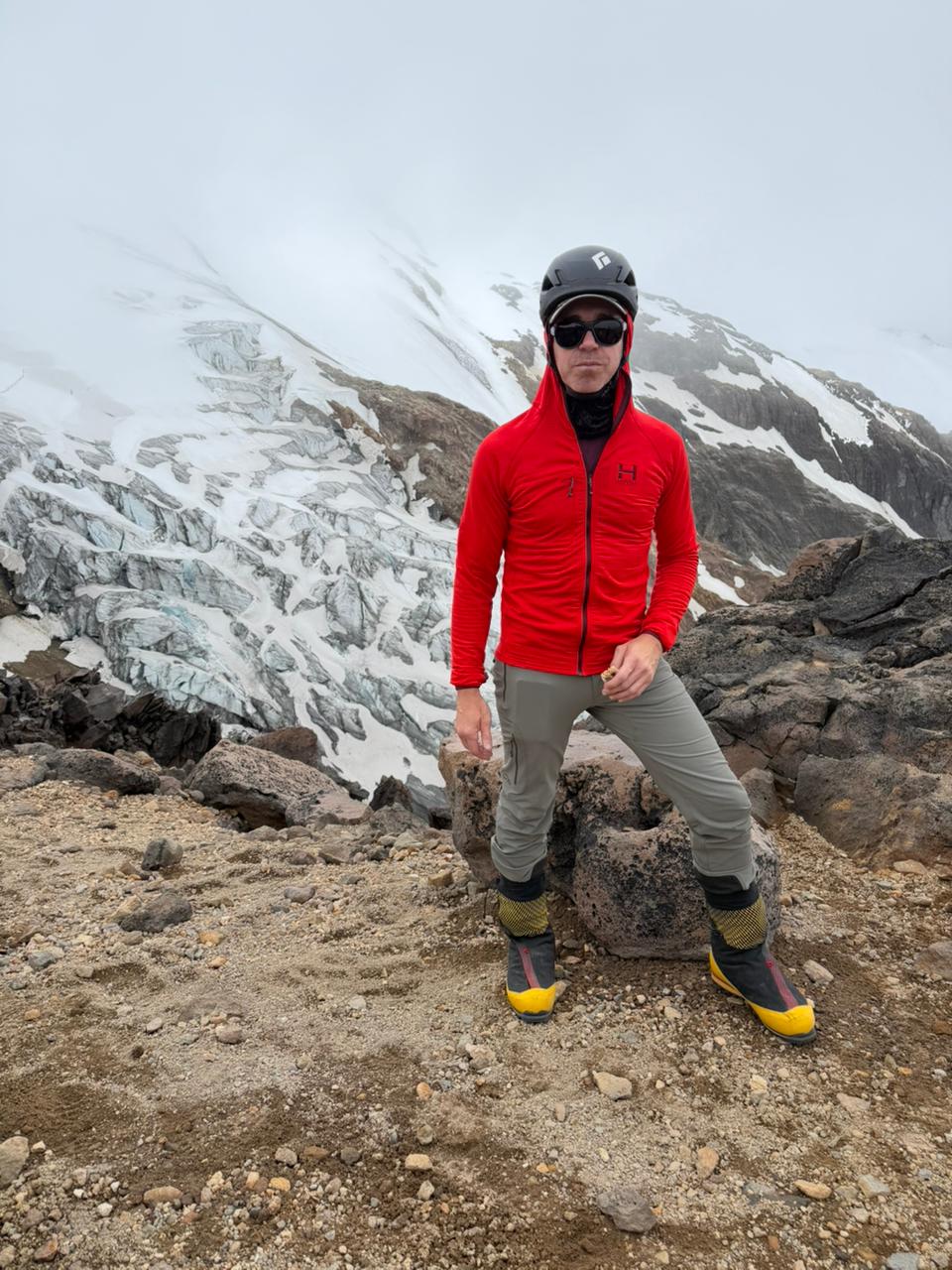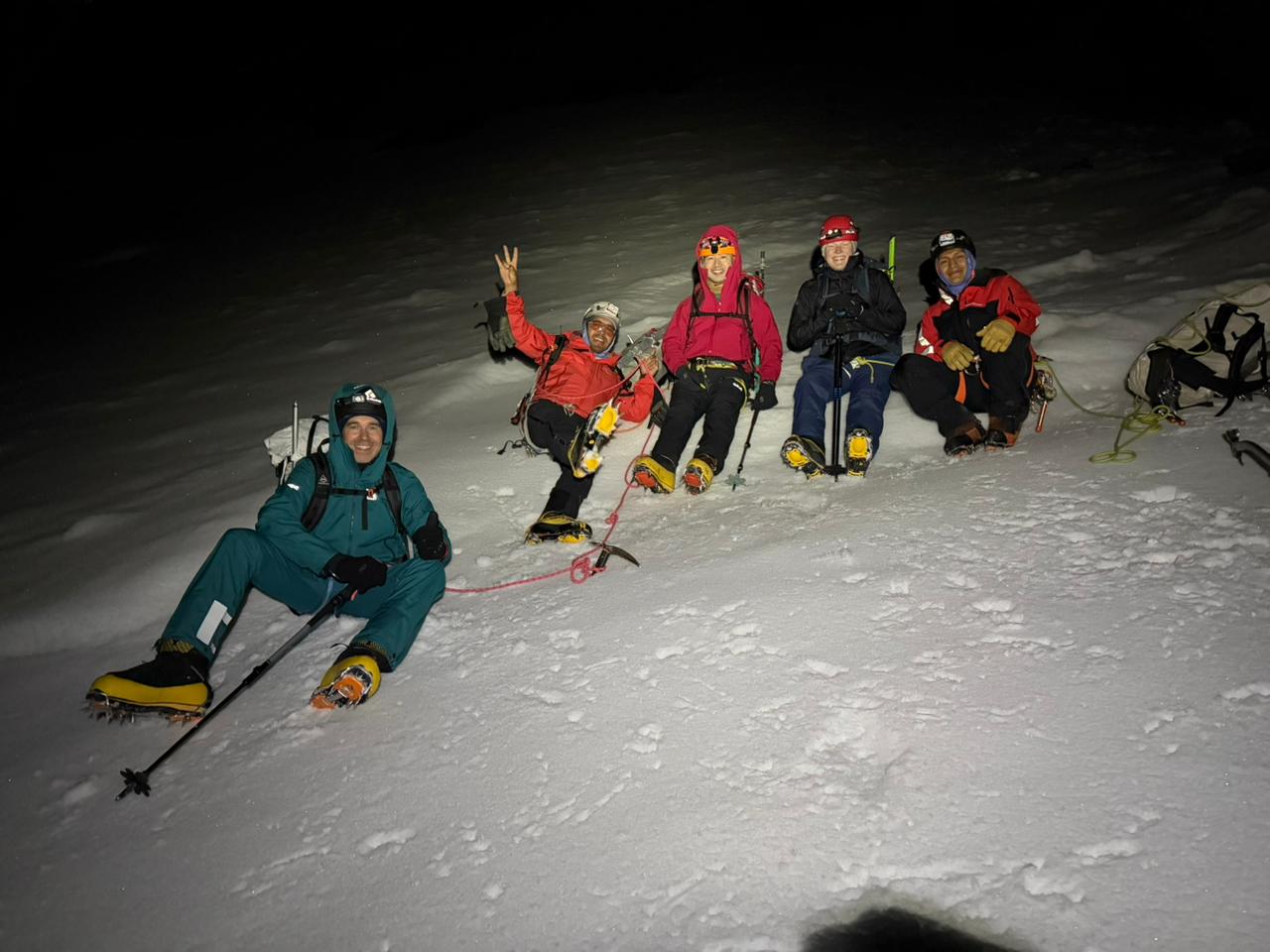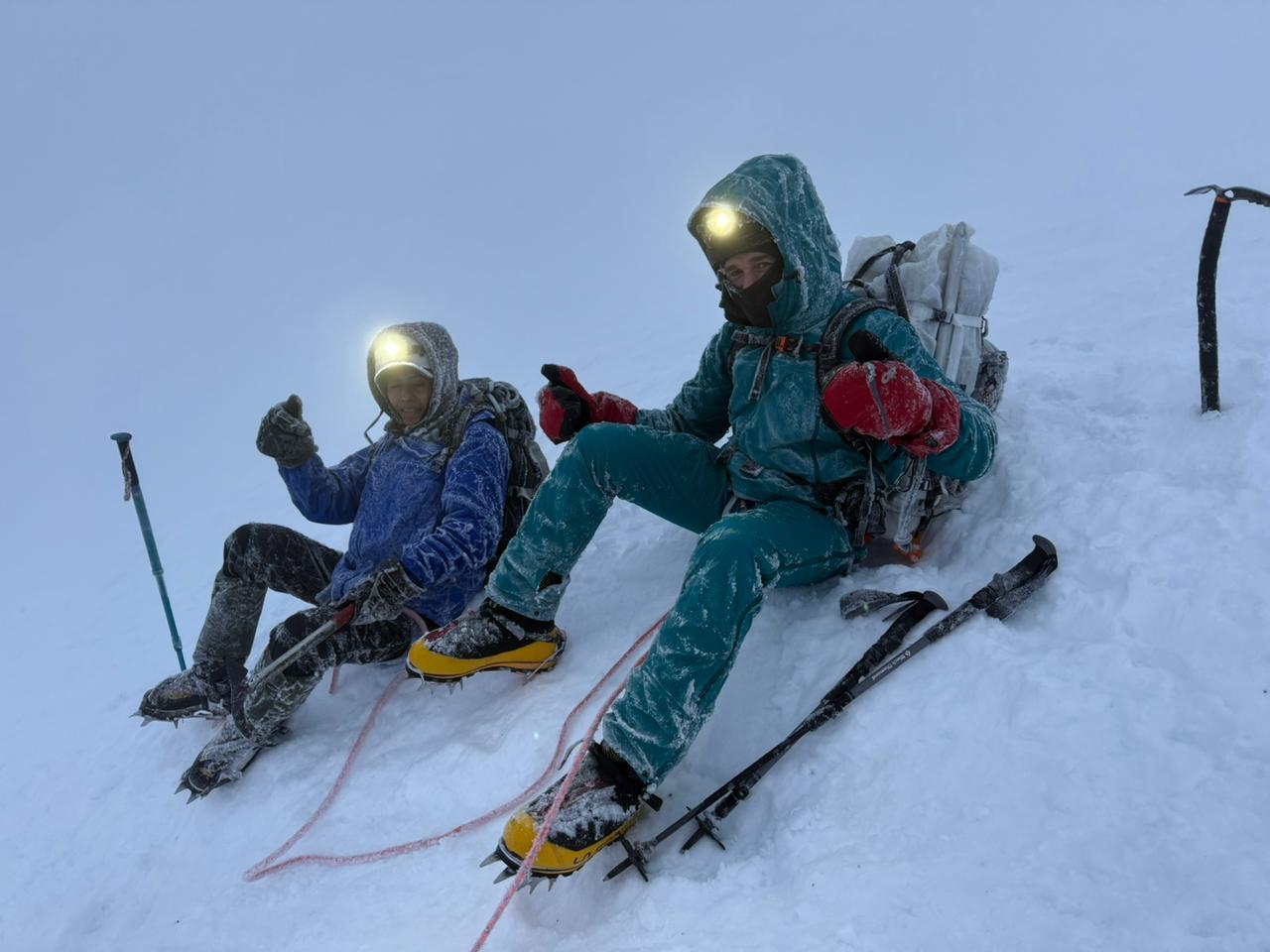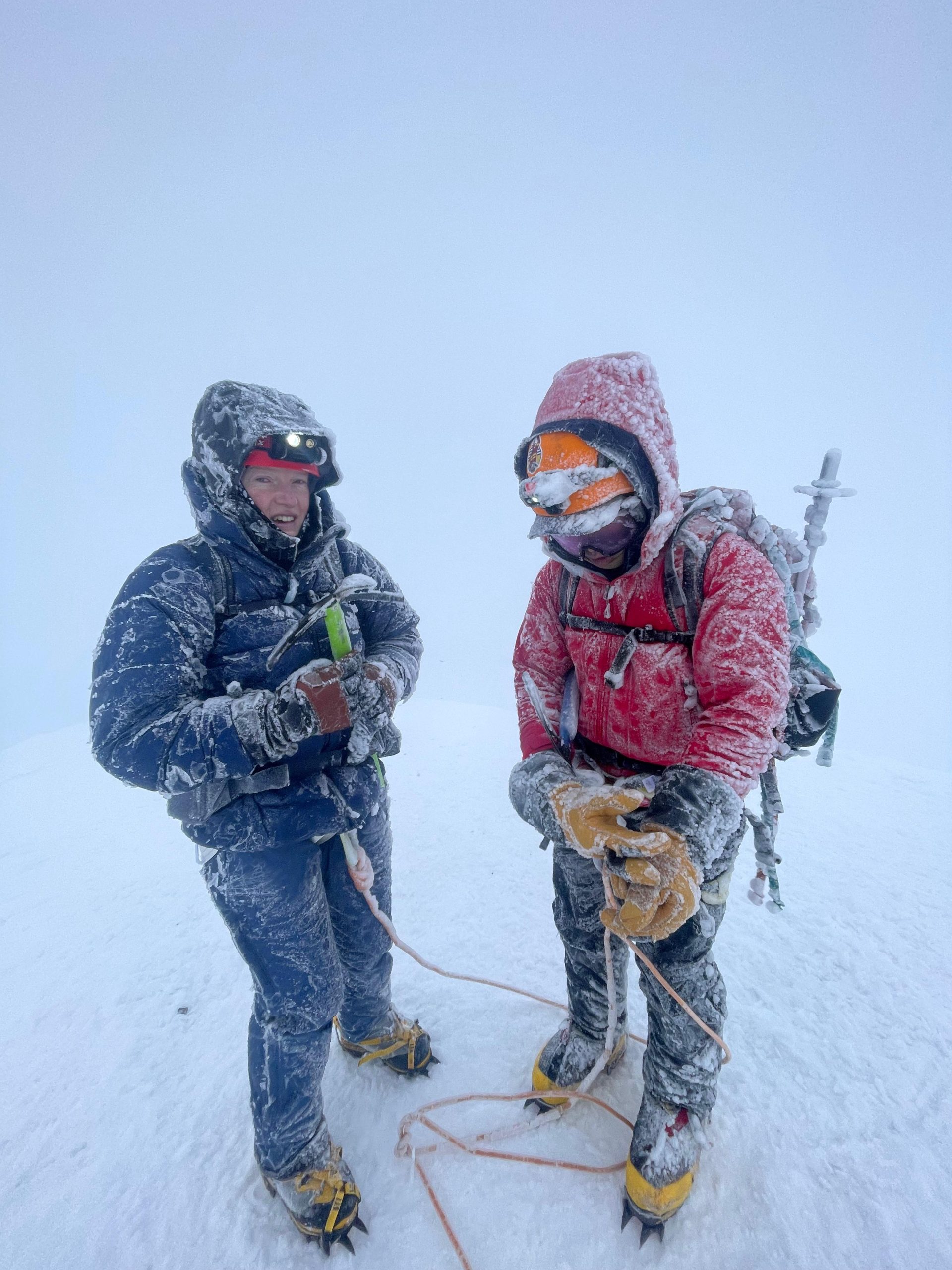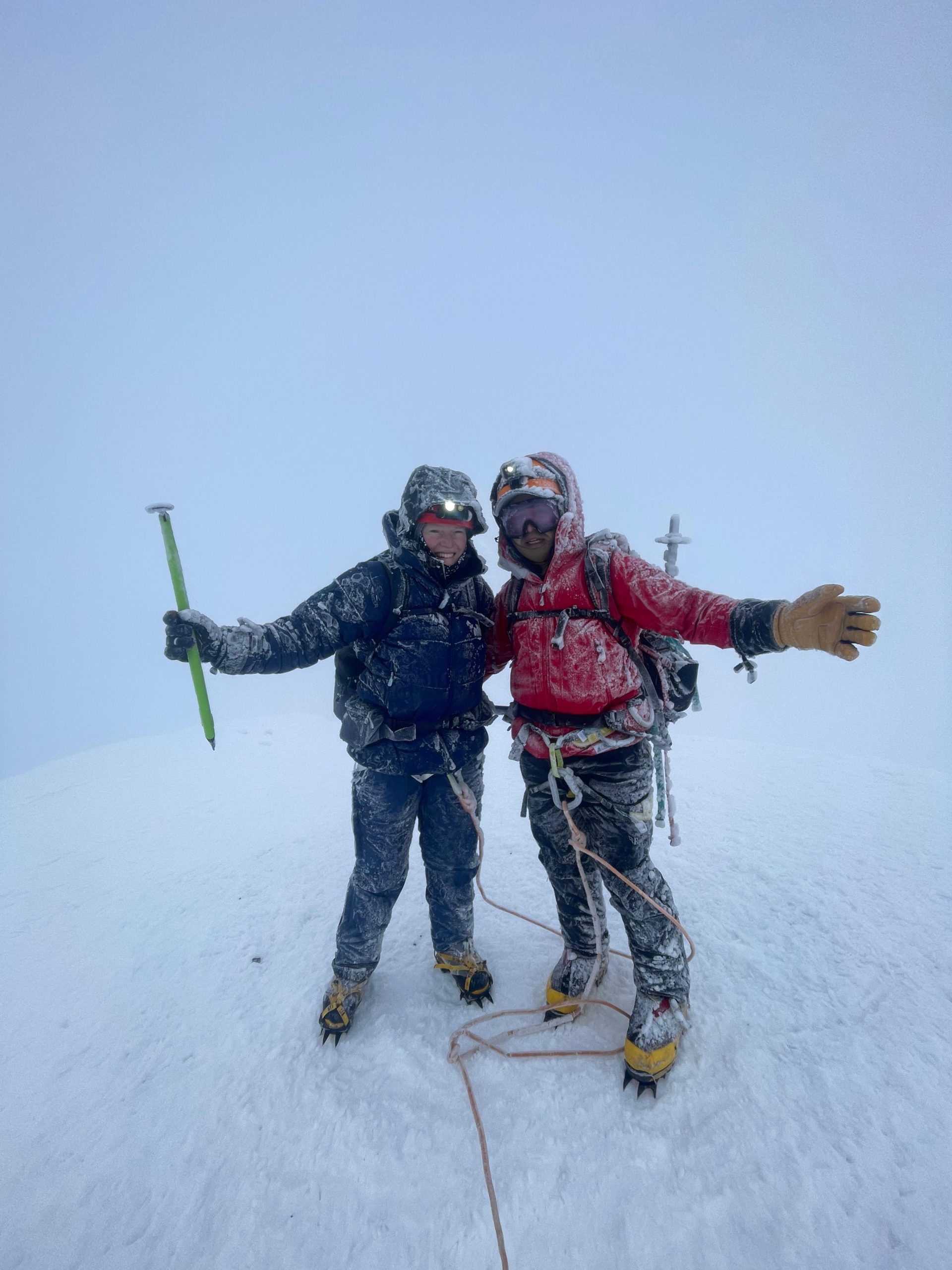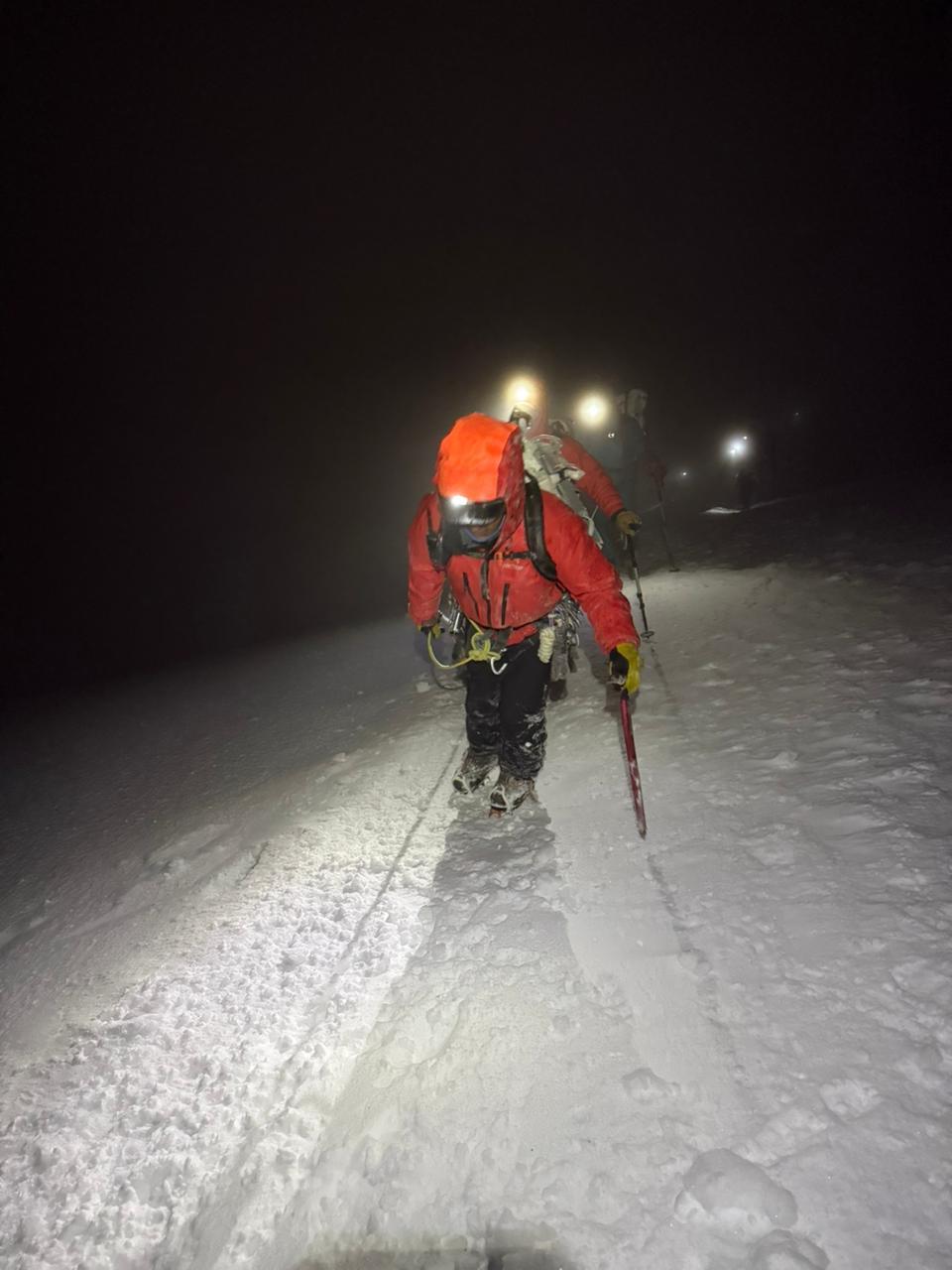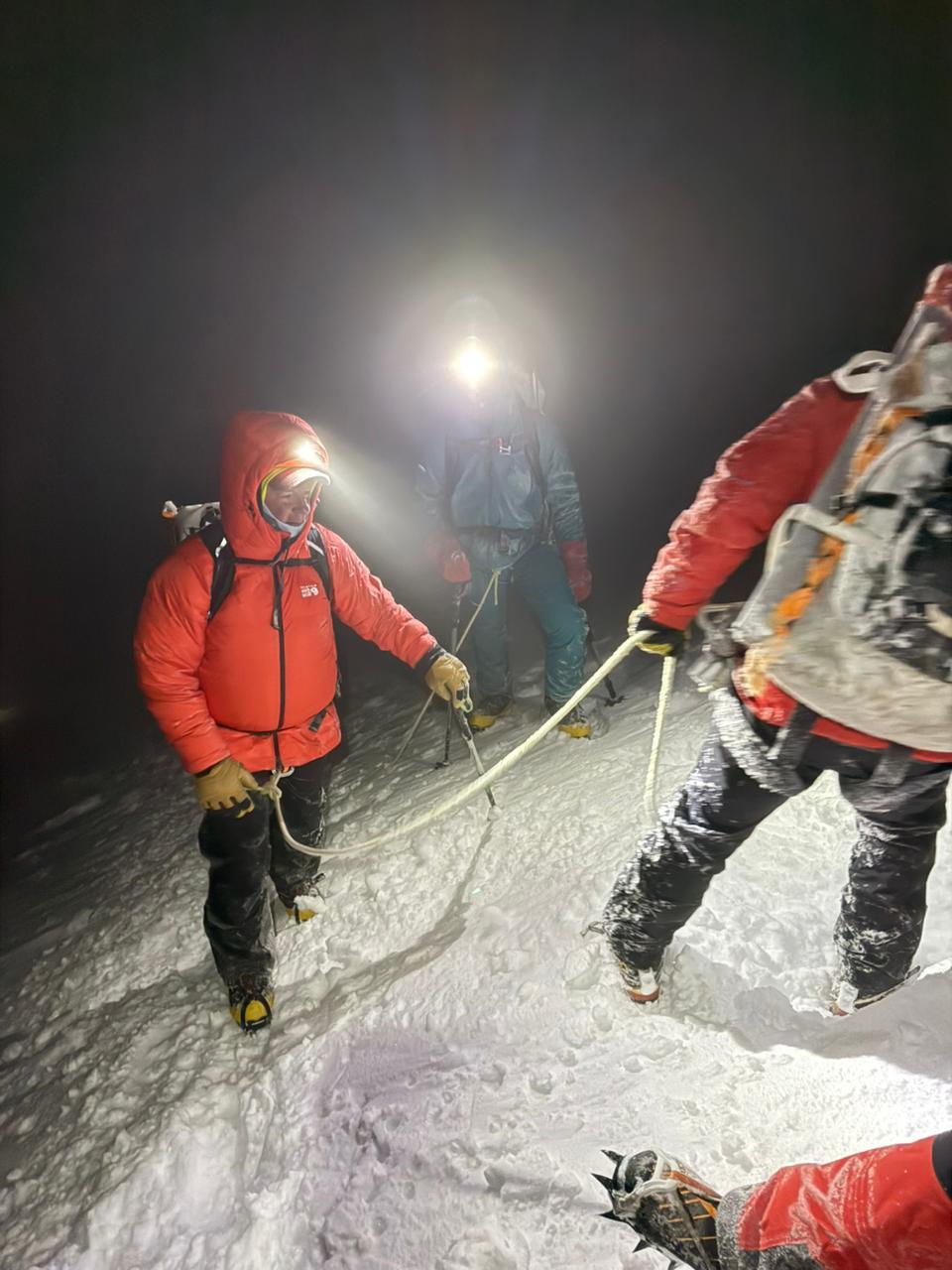Round-Trip Helicopter from Kathmandu to Lukla
Round-Trip Helicopter from Kathmandu to Lukla
Share Expedition
Round-Trip Helicopter from Kathmandu to Lukla
Price: $1,500 USD
Due to ongoing flight restrictions at Tribhuvan International Airport (KTM), almost all flights from Kathmandu to Lukla now operate from Ramechhap, a smaller airstrip approximately 4–5 hours by road from Kathmandu. The airport in Ramechhap is dedicated to mountain flights and allows earlier-morning departures when mountain weather is more stable; however, it requires a long, bumpy pre-dawn transfer, often departing Kathmandu before 3 am. Since there are no suitable accommodation options in Ramechhap, if flights are delayed due to mountain weather, you may face an uncomfortable wait or even have to make the full 9–10-hour round trip back to Kathmandu and repeat it the following day.
For those who prefer to avoid this hassle, a direct helicopter transfer from Kathmandu to Lukla is the most seamless solution. It saves valuable time, maximizes comfort and recovery, eliminates the uncertainty of the road transfer, and ensures the smoothest possible start (and finish) to your Himalayan adventure—all with the added bonus of a spectacular scenic flight.
EBC Custom & Private Trek
Custom & Private Trek
Contact us for dates & pricing.
We pride ourselves on our ability to customize your trek to suit your needs and believe that a trek to Everest Base Camp should not be one-size-fits-all. We offer a variety of options and add-ons because we believe every trekker has individual needs. Our deep personalization and client care are second to none. DON’T get lost in the numbers and join a large team where quality and personal attention suffer.
If you think this option is right for you, please contact us directly, and we will work with you to develop a personalized plan that maximizes your time trekking to Everest Base Camp.
Having your own private trekking guide with you can be an invaluable advantage, allowing you to customize your itinerary and schedule. A personal guide will give you total autonomy and control over your trip, and they can coach you throughout the expedition, give you valuable feedback, be available if there are any medical issues, and make your climbing experience more enjoyable overall.
Although reaching Everest Base Camp is obviously never guaranteed, there is no better way to stack the odds in your favor than trekking with a private guide.
This expedition provides a private guide at a 1:1 ratio. CTSS provides guidance, leadership, and expedition oversight from renowned expedition leader Mike Hamill, along with expert guides, logistics, team gear, porters, food, and support for your trek to Everest Base Camp.
All prices are in US Dollars.
CTSS requires clients to buy trip insurance for all expeditions. Please see our trip insurance and cancellation policy page for more information.
All payments, once submitted, are non-refundable and non-transferable. If balances are not received by the specified dates, the client forfeits their place on the program and any prior fees paid.
Our expeditions are designed to be fully inclusive, except for certain services and personal items, such as flights, gear, and insurance.
We highly recommend adding contingency days to the end of your trip and booking a flexible fare for the return flight. Flights can sometimes be delayed out of the Khumbu due to mountain weather. Please note CTSS covers one night in Kathmandu at the end of your trip.
Included in the Everest Base Camp Custom & Private Trek:
- Professional trek leaders
- Leadership, strategy, logistics, and expedition oversight
- Airport transfers
- Accommodation in Kathmandu
- Welcome dinner
- Transportation associated with the program itinerary
- Flights to and from Lukla
- Accommodation in lodges and teahouses in the Khumbu Valley
- 2x nights accommodation at Everest Base Camp Proper
- Tent accommodation at Lobuche Base Camp
- Breakfast and dinner during the expedition
- Park fees and trekking permits
- Porters to carry trekking duffels on the trek
- Mountain camp infrastructure and logistics
- Group gear that is not included in the expedition gear list
Excluded from the Everest Base Camp Custom & Private Trek:
- International Flight to/from Kathmandu, Nepal
- Airport arrival or departure taxes
- Associated travel expenses (visas, passports, reciprocity fees, vaccination charges, excess baggage)
- Optional add-ons, excursions, or additional days before or after the scheduled program
- All costs incurred prior to the start date of the trip and after the end date
- Single-room accommodations, if desired and pre-booked
- All in-town restaurant meals (non-team meals in Kathmandu are your own responsibility)
- Bar tabs, minibars, hotel internet bills, laundry, etc.
- Personal climbing gear, equipment, and snacks (see Gear List for details)
- Sherpa tip pool ($300 for trekkers)
- Guide tips (customary but optional)
- Required trip insurance policy (trip cancellation, interruption, rescue & evacuation, medical treatment, repatriation, etc.)
- Unused contingency days at the end of your program (CTSS covers one night in the hotel in Kathmandu on your return; additional nights are your responsibility)
- Costs incurred as a result of events beyond the control of CTSS
- Expenses while on the expedition that are above and beyond the normal scope of the trip
- Rescue expenses or excess expenses above and beyond our normal trip costs
EBC Trek + Camp 3 Climb
EBC Tre + Camp 3 Climb
Everest Base Camp Trek + Mount Everest Camp 3 Climb: $21,995 USD
- Annually: April 3rd – May 12th
A Camp 3 (24,000ft/7,500 m) climb is a phenomenal way to prepare for a future Everest or another 8,000m climb, not to mention a stunning and challenging climb in and of itself.
If Everest is on your horizon, gaining familiarity with the route, the style of climbing required to master the Khumbu icefall, the Western CWM, and the Lhotse Face, and even understanding the nature of what it is to be part of an Everest expedition will give you an unparalleled advantage when you return for your summit bid in the future. A Camp 3 climb also satisfies the 7,000m Everest pre-requisite in a fun, affordable, and productive way.
Our Camp 3 climbers are also offered the opportunity to use supplemental oxygen while climbing on the Lhotse Face to familiarize themselves with the systems and build an invaluable skill set for the future. A huge advantage!
CTSS provides guidance, leadership, and expedition oversight from renowned expedition leader Mike Hamill, along with expert guides, logistics, team gear, porters, food, and support for your climb to Camp 3 and trek to Everest Base Camp.
All prices are in US Dollars.
CTSS requires clients to buy trip insurance for all expeditions. Please see our trip insurance and cancellation policy page for more information.
All payments, once submitted, are non-refundable and non-transferable. If balances are not received by the specified dates, the client forfeits their place on the program and any prior fees paid.
This itinerary is only a rough estimate and may be adjusted based on weather and conditions. This is adventure travel, meaning things rarely go as planned, and this schedule will likely change. Trekkers need to be adaptable and positive.
We always recommend that trekkers arrive in Kathmandu one day early to avoid travel delays or lost baggage. Any additional expenses (hotel/food/sightseeing) for this extra day are the client’s responsibility.
- Day 1: Arrive in Kathmandu, airport pick up and transfer to our hotel
- Day 2: Obtain climbing permits, free day in Kathmandu, team dinner
- Day 3: Fly to Lukla and begin trekking to Phakding
- Day 4: Trek to Namche
- Day 5: Rest day and acclimatization hike in Namche
- Day 6: Hike to Tengboche
- Day 7: Rest day and acclimatization hike in Tengboche. Visit the Tengboche Monastery
- Day 8: Hike to Pheriche
- Day 9: Rest day and acclimatization hike in Pheriche
- Day 10: Hike to Lobuche Base Camp, overnight in CTSS tented camp
- Day 11: Acclimatization hike, Lobuche High Camp, skills refresher, overnight in CTSS tented camp
- Day 12: Move to Lobuche High Camp, overnight in CTSS tented camp
- Day 13: Acclimatization hike above Lobuche High Camp, overnight in CTSS tented camp
- Day 14: Summit Lobuche and return to Lobuche Base Camp, overnight in CTSS tented camp
- Day 15: Trek to Everest Base Camp, overnight in CTSS tented camp
- Day 16: Rest at Everest Base Camp, overnight in CTSS tented camp
- Day 17: Training and acclimatization hike, overnight in CTSS tented camp
- Day 18: Packing and acclimatization hike, overnight in CTSS tented camp
- Day 19: Climb to Camp 1, overnight in CTSS tented camp
- Day 20: Climb to Camp 2, return to Camp 1, overnight in CTSS tented camp
- Day 21: Move to Camp 2, overnight in CTSS tented camp
- Day 22: Descend to Everest Base Camp, overnight in CTSS tented camp
- Day 23: Rest day, overnight in CTSS tented camp
- Day 24: Hike to Pumori Camp 1, overnight in CTSS tented camp
- Day 25: Rest & pack up gear at Everest Base camp, overnight in CTSS tented camp
- Day 26: Climb to Camp 1, overnight in CTSS tented camp
- Day 27: Climb to Camp 2, overnight in CTSS tented camp
- Day 28: Touch the base of the Lhotse Face, return to Camp 2, overnight in CTSS tented camp
- Day 29: Climb to touch Camp 3, return to Camp 2, overnight in CTSS tented camp
- Day 30: Descend to Everest Base Camp, overnight in CTSS tented camp
- Day 31: Rest & pack up gear at Everest Base camp, overnight in CTSS tented camp
- Day 32: Trek to Pheriche
- Day 33: Trek to Namche
- Day 34: Trek to Lukla
- Day 35: Fly to Kathmandu
- Day 36: Fly home
- Day 37: Contingency day
- Day 38: Contingency day
- Day 39: Contingency day
Our expeditions are designed to be fully inclusive, except for certain services and personal items, such as flights, gear, and insurance.
We highly recommend adding contingency days to the end of your trip and booking a flexible fare for the return flight. Flights can sometimes be delayed out of the Khumbu due to mountain weather. Please note CTSS covers one night in Kathmandu at the end of your trip.
Included in the Everest Base Camp Trek + Mount Everest Camp 3 Climb:
- Professional mountain guides
- Professional Sherpa support staff and base camp support staff
- Climbing Sherpa and trek porters to assist with carrying personal gear
- Leadership, strategy, logistics, and expedition oversight
- Airport transfers
- Hotel accommodations in Kathmandu, Nepal (double-occupancy)
- Welcome dinner
- Transportation associated with the program itinerary
- Flights to and from Lukla
- Accommodation in lodges and teahouses in the Khumbu Valley (double-occupancy)
- Climbing permit for Everest and Lobuche East
- Breakfast and dinner during the expedition
- CTSS Everest Base Camp and Lobuche Base Camp setup and tent accommodation (double-occupancy)
- High mountain camp infrastructure and logistics (Camp 1, Camp 2, Camp 3)
- Lobuche East peak training and acclimatization climb (program dependent)
- Oxygen system and oxygen bottles
- Group gear that is not included in the expedition gear list
Excluded from the Everest Base Camp Trek + Mount Everest Camp 3 Climb:
- International Flight to/from Kathmandu, Nepal
- Airport arrival or departure taxes
- Associated travel expenses (visas, passports, reciprocity fees, vaccination charges, excess baggage)
- Optional add-ons, excursions, or additional days before or after the scheduled program
- All costs incurred prior to the start date of the trip and after the end date
- Single-room accommodations, if desired and pre-booked
- All in-town restaurant meals (non-team meals in Kathmandu are your own responsibility)
- Bar tabs, minibars, hotel internet bills, laundry, etc.
- Personal climbing gear, equipment, and snacks (see Gear List for details)
- Sherpa tip pool
- Guide tips (customary but optional)
- Required trip insurance policy (trip cancellation, interruption, rescue & evacuation, medical treatment, repatriation, etc.)
- Unused contingency days at the end of your program (CTSS covers one night in the hotel in Kathmandu on your return; additional nights are your responsibility)
- Costs incurred as a result of events beyond the control of CTSS
- Expenses while on the expedition that are above and beyond the normal scope of the trip
- Rescue expenses or excess expenses above and beyond our normal trip costs
EBC Trek + Camp 2 Climb
EBC Trek + Camp 2 Climb
Everest Base Camp Trek + Mount Everest Camp 2 Climb: $17,995 USD
- Annually: April 3rd – May 3rd
A climb to Camp 2 (21,500 ft/6,500 m) on Everest is a great way to sample the mountain without the stress, duration, or high cost of a summit bid.
Whether you are fascinated by the biggest mountain in the world and want to experience what it is like to be an Everest climber, or you are looking to climb Everest in the future and want to become familiar with the logistics and route, you won’t be disappointed!
A Camp 2 climb is an excellent progression step in your climbing career, and the thrill of climbing in the renowned Khumbu Icefall and through the breathtaking Western CWM will stay with you for life..
CTSS provides guidance, leadership, and expedition oversight from renowned expedition leader Mike Hamill, along with expert guides, logistics, team gear, porters, food, and support for your climb to Camp 2 and trek to Everest Base Camp.
All prices are in US Dollars.
CTSS requires clients to buy trip insurance for all expeditions. Please see our trip insurance and cancellation policy page for more information.
All payments, once submitted, are non-refundable and non-transferable. If balances are not received by the specified dates, the client forfeits their place on the program and any prior fees paid.
This itinerary is a rough estimate and will be adjusted according to weather and conditions. This is adventure travel, meaning things rarely go as planned, and this schedule will likely change. Climbers need to be adaptable and maintain a positive attitude.
We always recommend climbers arrive in Kathmandu one day early to avoid travel delays or issues with lost baggage. The client is responsible for the added expenses (hotel/food/sightseeing) of this extra day. Please let us know if we need to organize logistics for your early arrival or accommodation upgrades.
- Day 1: Arrive in Kathmandu, airport pick up and transfer to our hotel
- Day 2: Obtain climbing permits, free day in Kathmandu, team dinner
- Day 3: Fly to Lukla and begin trekking to Phakding
- Day 4: Trek to Namche
- Day 5: Rest day and acclimatization hike in Namche
- Day 6: Hike to Tengboche
- Day 7: Rest day and acclimatization hike in Tengboche. Visit the Tengboche Monastery
- Day 8: Hike to Pheriche
- Day 9: Rest day and acclimatization hike in Pheriche
- Day 10: Hike to Lobuche Base Camp, overnight in CTSS tented camp
- Day 11: Acclimatization hike Lobuche High Camp, skills refresher, overnight in CTSS tented camp
- Day 12: Move to Lobuche High Camp, overnight in CTSS tented camp
- Day 13: Acclimatization hike above Lobuche High Camp, overnight in CTSS tented camp
- Day 14: Summit Lobuche and return to Lobuche Base Camp, , overnight in CTSS tented camp
- Day 15: Trek to Everest Base Camp, overnight in CTSS tented camp
- Day 16: Rest at Everest Base Camp, overnight in CTSS tented camp
- Day 17: Training and acclimatization hike, overnight in CTSS tented camp
- Day 18: Packing and acclimatization hike, overnight in CTSS tented camp
- Day 19: Climb to Camp 1, overnight in CTSS tented camp
- Day 20: Climb to Camp 2, return to Camp 1, overnight in CTSS tented camp
- Day 21: Descend to Everest Base Camp, overnight in CTSS tented camp
- Day 22: Rest & pack up gear at Everest Base camp, overnight in CTSS tented camp
- Day 23: Trek to Pheriche
- Day 24: Trek to Namche
- Day 25: Trek to Lukla
- Day 26: Fly to Kathmandu
- Day 27: Fly home
- Day 28: Contingency day
- Day 29: Contingency day
- Day 30: Contingency day
Our expeditions are designed to be fully inclusive, except for certain services and personal items, such as flights, gear, and insurance. Here’s a detailed list so you know what to expect.
Included in the Everest Base Camp Trek + Mount Everest Camp 2 Climb:
- Professional mountain guides
- Professional Sherpa support staff and base camp support staff
- Climbing Sherpa and trek porters to assist with carrying personal gear
- Leadership, strategy, logistics, and expedition oversight
- Airport transfers
- Hotel accommodations in Kathmandu, Nepal (double-occupancy)
- Welcome dinner
- Transportation associated with the program itinerary
- Flights to and from Lukla
- Accommodation in lodges and teahouses in the Khumbu Valley (double-occupancy)
- Climbing permit for Everest and Lobuche East
- Breakfast and dinner during the expedition
- CTSS Everest Base Camp and Lobuche Base Camp setup and tent accommodation (double-occupancy)
- High mountain camp infrastructure and logistics (Camp 1, Camp 2)
- Lobuche East peak training and acclimatization climb (program dependent)
- Oxygen system and oxygen bottles
- Group gear that is not included in the expedition gear list
Excluded from the Everest Base Camp Trek + Mount Everest Camp 2 Climb:
- International Flight to/from Kathmandu, Nepal
- Airport arrival or departure taxes
- Associated travel expenses (visas, passports, reciprocity fees, vaccination charges, excess baggage)
- Optional add-ons, excursions, or additional days before or after the scheduled program
- All costs incurred prior to the start date of the trip and after the end date
- Single-room accommodations, if desired and pre-booked
- All in-town restaurant meals (non-team meals in Kathmandu are your own responsibility)
- Bar tabs, minibars, hotel internet bills, laundry, etc.
- Personal climbing gear, equipment, and snacks (see Gear List for details)
- Sherpa tip pool
- Guide tips (customary but optional)
- Required trip insurance policy (trip cancellation, interruption, rescue & evacuation, medical treatment, repatriation, etc.)
- Unused contingency days at the end of your program (CTSS covers one night in the hotel in Kathmandu on your return; additional nights are your responsibility)
- Costs incurred as a result of events beyond the control of CTSS
- Expenses while on the expedition that are above and beyond the normal scope of the trip
- Rescue expenses or excess expenses above and beyond our normal trip costs
EBC Trek + Lobuche East Climb
EBC Trek + Lobuche East Climb
Share Expedition
EBC Trek + Lobuche East Climb
Everest Base Camp Trek + Lobuche East Climb: $6,995 USD
- Annually: April 3rd – April 24th
Lobuche Peak is a jewel of the Himalaya and offers perhaps the best summit view in the world! Lobuche is surrounded by the tallest peaks on Earth, and the view from the summit extends to the Everest, Lhotse, Nuptse massif, Makalu, as well as Pumori, Ama Dablam, Cho Oyu, Thamserku, and many others. This is a great first Himalayan climb and training peak for taller mountains such as Aconcagua, Ama Dablam, and Cho Oyu. Those considering an ascent of Lobuche East must be familiar with crampon and ice axe techniques and have used a harness before. We will run a training refresher at Lobuche Base Camp before the ascent, so if you are a little rusty, don’t worry, we will get you up to speed. If you’re unsure whether you have the experience for this climb, please ask us. If not, we can recommend additional training to prepare for an ascent of Lobuche East.
If you’re an Everest climber, your friends and family can join you on your acclimatization climb of Lobuche East en route to Everest and challenge themselves on steep fixed-line climbing up rock, snow, and ice.
CTSS provides guidance, leadership, and expedition oversight from renowned expedition leader Mike Hamill, along with expert guides, logistics, team gear, porters, food, and support for your summit attempt on Lobuche East and trek to Everest Base Camp.
All prices are in US Dollars.
CTSS requires clients to buy trip insurance for all expeditions. Please see our trip insurance and cancellation policy page for more information.
All payments, once submitted, are non-refundable and non-transferable. If balances are not received by the specified dates, the client forfeits their place on the program and any prior fees paid.
This itinerary is a rough estimate and will be adjusted according to weather and conditions. This is adventure travel, meaning things rarely go as planned, and this schedule will likely change. Climbers need to be adaptable and maintain a positive attitude.
We always recommend climbers arrive in Kathmandu one day early to avoid travel delays or issues with lost baggage. The client is responsible for the added expenses (hotel/food/sightseeing) of this extra day. Please let us know if we need to organize logistics for your early arrival or accommodation upgrades.
- Day 1: Arrive in Kathmandu, airport pick up and transfer to our hotel
- Day 2: Obtain climbing permits, free day in Kathmandu, team dinner
- Day 3: Fly to Lukla and begin trekking to Phakding
- Day 4: Trek to Namche
- Day 5: Rest day and acclimatization hike in Namche
- Day 6: Hike to Tengboche
- Day 7: Rest day and acclimatization hike in Tengboche. Visit the Tengboche Monastery
- Day 8: Hike to Pheriche
- Day 9: Rest day and acclimatization hike in Pheriche
- Day 10: Hike to Lobuche Base Camp, overnight in CTSS tented camp
- Day 11: Acclimatization hike to Lobuche High Camp, skills refresher, overnight in CTSS tented camp
- Day 12: Move to Lobuche High Camp, overnight in CTSS tented camp
- Day 13: Acclimatization hike above Lobuche High Camp, overnight in CTSS tented camp
- Day 14: Summit Lobuche and return to Lobuche Base Camp, overnight in CTSS tented camp
- Day 15: Trek to Everest Base Camp, overnight in CTSS tented camp
- Day 16: Explore at Everest Base Camp, overnight in CTSS tented camp
- Day 17: Trek to Pheriche
- Day 18: Trek to Namche
- Day 19: Trek to Lukla
- Day 20: Fly to Kathmandu
- Day 21: Fly Home
- Day 22: Contingency Day
Our expeditions are designed to be fully inclusive, except for certain services and personal items, such as flights, gear, and insurance.
We highly recommend adding contingency days to the end of your trip and booking a flexible fare for the return flight. Flights can sometimes be delayed out of the Khumbu due to mountain weather. Please note CTSS covers one night in Kathmandu at the end of your trip.
Included in the Everest Base Camp Trek + Lobuche East Climb:
- Professional mountain guides
- Professional Sherpa support staff and base camp support staff
- Leadership, strategy, logistics, and expedition oversight
- Airport transfers
- Hotel accommodations in Kathmandu, Nepal (double-occupancy)
- Transportation associated with the program itinerary
- Flights to and from Lukla
- Accommodation in lodges and teahouses in the Khumbu Valley (double-occupancy)
- CTSS Lobuchue Base Camp setup and tent accommodation (double-occupancy)
- 2x nights accommodation at Everest Base Camp proper (double-occupancy)
- Climbing permit for Lobuche East
- Training and skills refresher clinics at Lobuche & Everest Base Camp
- Breakfast and dinner during the expedition
- Group gear that is not included in the expedition gear list
Excluded from the Everest Base Camp Trek + Lobuche East Climb:
- International Flight to/from Kathmandu, Nepal
- Airport arrival or departure taxes
- Associated travel expenses (visas, passports, reciprocity fees, vaccination charges, excess baggage)
- Optional add-ons, excursions, or additional days before or after the scheduled program
- All costs incurred prior to the start date of the trip and after the end date
- Single-room accommodations, if desired and pre-booked
- All in-town restaurant meals (non-team meals in Kathmandu are your own responsibility)
- Bar tabs, minibars, hotel internet bills, laundry, etc.
- Personal climbing gear, equipment, and snacks (see Gear List for details)
- Sherpa tip pool
- Guide tips (customary but optional)
- Required trip insurance policy (trip cancellation, interruption, rescue & evacuation, medical treatment, repatriation, etc.)
- Unused contingency days at the end of your program (CTSS covers one night in the hotel in Kathmandu on your return; additional nights are your responsibility)
- Costs incurred as a result of events beyond the control of CTSS
- Expenses while on the expedition that are above and beyond the normal scope of the trip
- Rescue expenses or excess expenses above and beyond our normal trip costs
Everest Base Camp Trek & Stay
Everest Base Camp Trek & Stay
Share Expedition
Everest Base Camp Trek & Stay
Everest Base Camp Trek & Stay Team Departure: $5,495 USD
- Annually: April 3rd – April 22nd
- Annually: April 12th – May 1st
The trek to Everest Base Camp is widely heralded as the best trek in the world, and for good reason.
Over the course of 20 days, you will travel by plane from Kathmandu to Lukla, the head of the Khumbu Valley. From there, you will trek roughly 40 miles/70 km through the lush green pastures, blossoming Rhododendron forests, up into the most precipitous mountain terrain one can imagine. En route to Everest Base Camp, you will experience the famous Sherpa culture and hospitality while taking in the views of the tallest mountains on earth.
The terminus of your trek is Everest Base Camp at 17,600ft/ 5,500m, where, since you are affiliated with an Everest climbing expedition, you are allowed to spend a night at our luxury expedition camp. This gives you insider access to the Everest Base Camp scene and community, an amenity not available to other trekking groups.
At Everest Base Camp proper, you will spend 2x nights in the heart of camp, with the opportunity to do a beginner-friendly ice climbing and mountaineering skills clinic on the lower part of the Khumbu Glacier. In addition, you will have ample time to hang out, relax, and soak up the vistas over the icefall in our famed Big House, complete with unlimited cappuccinos from the world’s highest cafe, and lively games of ping-pong on the world’s highest ping pong table! Finally, before you make your descent back to Lukla, you will have the opportunity to climb Kala Pathar, which boasts stunning views of the Everest Massif, Lhotse, and Nuptse.
This trek is ideal for anyone who wants to challenge themselves and is a great option for families and friends of CTSS climbers. They can join the trek-in, stay at Everest Base Camp, and gain firsthand experience as part of our Everest and Lhotse expeditions.
After your once-in-a-lifetime stay at Everest Base Camp, you will retrace your steps back down the valley, before flying back to Kathmandu and onward home.
- If these dates don’t work for you, or you would like a private trip and private guide, we also build custom itineraries for many of our climbers.
- You can trek to Everest Base Camp as a standalone expedition, or you can round out your experience in the Himalayas with additional climbs, treks, and tours.
This is our traditional guided team trek, which ascends the stunning Khumbu Valley. CTSS provides guidance, leadership, and expedition oversight from renowned expedition leader Mike Hamill, along with expert guides, logistics, team gear, porters, food, and support for your trek to Everest Base Camp.
All prices are in US Dollars.
CTSS requires clients to buy trip insurance for all expeditions. Please see our trip insurance and cancellation policy page for more information.
All payments, once submitted, are non-refundable and non-transferable. If balances are not received by the specified dates, the client forfeits their place on the program and any prior fees paid.
This itinerary is a rough estimate and will be adjusted according to weather and conditions. This is adventure travel, meaning things rarely go as planned, and this schedule will likely change. Climbers need to be adaptable and maintain a positive attitude.
We always recommend climbers arrive in Kathmandu one day early to avoid travel delays or issues with lost baggage. The client is responsible for the added expenses (hotel/food/sightseeing) of this extra day. Please let us know if we need to organize logistics for your early arrival or accommodation upgrades.
- Day 1: Arrive in Kathmandu, airport pick up and transfer to our hotel
- Day 2: Meet for breakfast, guide briefing, gear check, free day in Kathmandu, team dinner
- Day 3: Fly to Lukla and begin trekking to Phakding
- Day 4: Trek to Namche Bazaar
- Day 5: Rest day and acclimatization hike in Namche
- Day 6: Hike to Tengboche
- Day 7: Rest day and acclimatization hike in Tengboche. Visit the Tengboche Monastery
- Day 8: Hike to Pheriche
- Day 9: Rest day and acclimatization hike in Pheriche
- Day 10: Hike to Lobuche Base Camp, overnight in CTSS tented camp
- Day 11: Trek to Lobuche High Camp, return to Base Camp, overnight in CTSS tented camp
- Day 12: Trek to Gorak Shep
- Day 13: Trek to Everest Base Camp, overnight in CTSS tented camp
- Day 14: Explore Everest Base Camp, ice-climbing clinic, overnight in CTSS tented camp
- Day 15: Climb Kala Patthar and descend to Pheriche
- Day 16: Trek to Namche
- Day 17: Trek to Lukla
- Day 18: Fly to Kathmandu
- Day 19: Contingency day
- Day 20: Fly home
Our expeditions are designed to be fully inclusive, except for certain services and personal items, such as flights, gear, and insurance.
We highly recommend adding contingency days to the end of your trip and booking a flexible fare for the return flight. Flights can sometimes be delayed out of the Khumbu due to mountain weather. Please note CTSS covers one night in Kathmandu at the end of your trip.
Included in the Everest Base Camp Trek:
- Professional trek leaders
- Leadership, strategy, logistics, and expedition oversight
- Airport transfers
- Accommodation in Kathmandu (double-occupancy)
- Welcome dinner
- Transportation associated with the program itinerary
- Flights to and from Lukla
- Accommodation in lodges and teahouses in the Khumbu Valley (double-occupancy)
- 2x nights accommodation at Everest Base Camp Proper (double-occupancy)
- Tent accommodation at Lobuche Base Camp
- Breakfast and dinner during the expedition
- Park fees and trekking permits
- Porters to carry trekking duffels on the trek
- Mountain camp infrastructure and logistics
- Group gear that is not included in the expedition gear list
Excluded from the Everest Base Camp Trek:
- International Flight to/from Kathmandu, Nepal
- Airport arrival or departure taxes
- Associated travel expenses (visas, passports, reciprocity fees, vaccination charges, excess baggage)
- Optional add-ons, excursions, or additional days before or after the scheduled program
- All costs incurred prior to the start date of the trip and after the end date
- Single-room accommodations, if desired and pre-booked
- All in-town restaurant meals (non-team meals in Kathmandu are your own responsibility)
- Bar tabs, minibars, hotel internet bills, laundry, etc.
- Personal climbing gear, equipment, and snacks (see Gear List for details)
- Sherpa tip pool ($300 for trekkers)
- Guide tips (customary but optional)
- Required trip insurance policy (trip cancellation, interruption, rescue & evacuation, medical treatment, repatriation, etc.)
- Unused contingency days at the end of your program (CTSS covers one night in the hotel in Kathmandu on your return; additional nights are your responsibility)
- Costs incurred as a result of events beyond the control of CTSS
- Expenses while on the expedition that are above and beyond the normal scope of the trip
- Rescue expenses or excess expenses above and beyond our normal trip costs
CTSS Vinson and Antarctica Season Begins
Vinson and Antarctica Season Begins
Antarctica is officially open for the season, and our first CTSS team is already on the ice. With twenty four hour daylight settling in and early weather windows stabilizing, the continent is shifting into its short but spectacular climbing window. This is one of the most remote and pristine environments on Earth, and we are excited to begin another year of expeditions across the ice.
Most of our climbers this season will be heading to Mount Vinson, traveling through Union Glacier before moving into the Ellsworth Mountains for their summit push on Antarctica’s highest peak. Others will begin with the South Pole Last Degree Ski, spending eight days traveling the final degree of latitude to the geographic South Pole before returning to Union Glacier to launch their Vinson climb. A smaller group will fly farther into the interior for Mount Sidley, Antarctica’s tallest dormant volcano and one of the least visited summits in the world.
Our Antarctica roster this year includes some of the strongest guides in the industry: Mike Bennett, Ty Sauerbrey, and Tomi Ceppi, who has fourteen Vinson expeditions under his belt with twelve successful summits. Last week, Tomi shared a few behind the scenes preparations from South America before making his way to the blue ice to kick off our season.
Our first team on the ice with Tomi is our Last Degree Ski team, who flew from Union Glacier to 89°S today and immediately began their traverse. Over the next four days, they will ski the final stretch to the geographic South Pole at 90°S, traveling six to eight hours per day across near flat snow and building camp each night on the glacier. Temperatures hover around negative forty while the sun circles overhead. After reaching the Pole, the team will fly back to Union Glacier to meet their Vinson teams.
As the season unfolds, we will be sharing regular updates, photos, and behind the scenes footage from Vinson, the Last Degree Ski, and Mount Sidley. Follow along on the CTSS blog and social media as our teams move through one of the most remote and extraordinary landscapes on the planet.
Photo from Tomi Ceppi, Last Degree Ski team
4 Breathing Mistakes That Can Cost You Your Summit (and How to Fix Them Before Your Expedition)
4 Breathing Mistakes That Can Cost You Your Summit
(and How to Fix Them Before Your Expedition)
Guest Post by Anthony Lorubbio: Founder & Head Coach of Recal Training
Breathwork isn’t the first thing most climbers think about when preparing for a major objective, but at altitude, it often becomes the deciding factor between moving well and turning around early.
I’m Anthony Lorubbio, Founder and Head Coach at Recal Training. I’ve worked with hundreds of climbers, and time after time I see the same pattern: when the stakes rise and the air thins, breathing—not fitness—is what makes or breaks performance.
I like to think about preparing for an expedition the same way I think about packing my climbing pack. You’ve only got so much room, and every ounce counts. So you start filling it with the things you can control. Physical training, check. Nutrition planning, check. Gear selection, check. You’ve packed your logistics, your fitness, your layering system, all the things that make you feel ready. But most climbers overlook one of the most powerful (and lightest) tools of them all: their breath.
Breathwork is something you carry every step of the way, yet few people ever think to train it. It is also one of the most common reasons someone is forced to abort an expedition.
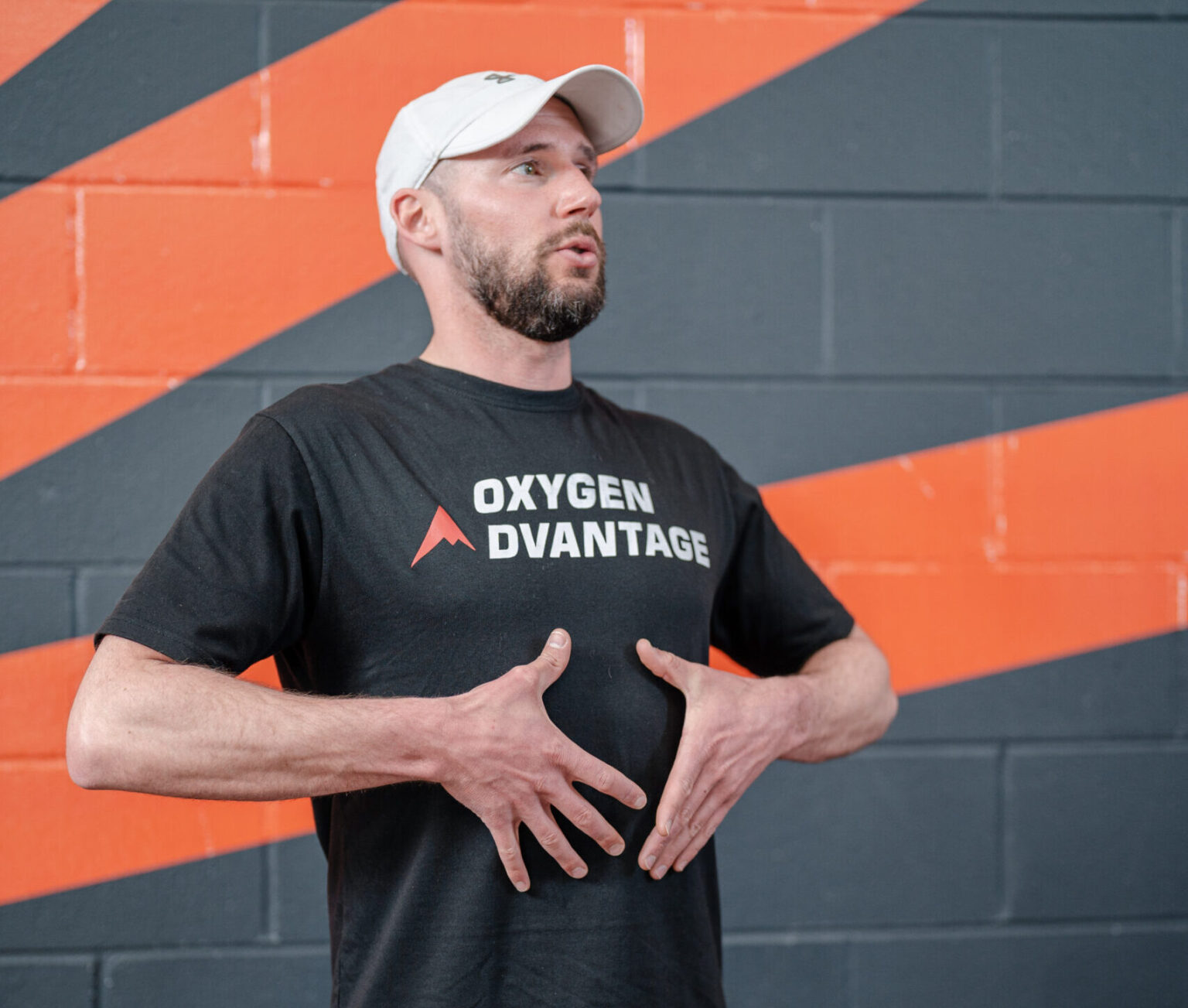
We spend months building leg strength, obsessing over acclimatization schedules, maybe even dialing in what we’re eating on the mountain with a nutritionist. But almost no one trains the very thing that determines how much oxygen actually gets used by your body, how well you breathe. So, before you zip up this hypothetical backpack and head to base camp, let’s make sure you’re not leaving one of the most important tools behind.
Below are the four most common breathing mistakes I see climbers make (the ones that can actually change your summit success) and the exact training and techniques I give my own clients before they fly or trek into base camp. These techniques are practical, evidence-based, and field-tested. And yes, I’ve tested them on myself, sometimes in the most epic and humbling of ways.
But before we even dive in, let’s start with a baseline test to find out how well YOU breathe. It’s called the Recal Breath Index, and it takes about 5 minutes to get a clear picture of how sharp your breathing mechanics are and how efficiently you utilize oxygen and carbon dioxide.
Knowing your Breath Index score will help you identify the weakest parts of your own breathing and get you on track to feeling less out of breath and stronger at the most challenging moments on the mountain.
- Mistake #1: Over-breathing (hyperventilation) when the stakes and altitude are highest
- Mistake #2: Too much mouth-breathing
- Mistake #3: Weak diaphragmatic engagement (breathing high and shallow)
- Mistake #4: Neglecting respiratory muscle training (RMT/IMT)
- Demystifying Breathwork Myths
- Watch our FREE Breathwork Webinar with Anthony
- Your Next Steps: Work with Anthony
Mistake #1: Over-breathing (hyperventilation) when the stakes and altitude are highest
Why is this a problem?
Over-breathing slows you down and taxes your respiratory muscles beyond their capacity. You likely won’t get efficient breaths (think: short, shallow, upper-chest breathing) and, paradoxically, taking in TOO MUCH air doesn’t work the way you think it does. It actually offloads too much carbon dioxide, which your body actually needs to release oxygen efficiently to your muscles. This means you’re working really hard for not much return on investment.
What to do about it?
You need to train for the feeling of breathlessness. Specifically, your breathing mechanics and CO₂ tolerance. Here’s a protocol for just that: Breathe Light.
How to Guide: Breathe Light
Watch the video first for guided practice, or use the steps below to do it on your own.
- In a comfortable seated position, breathe normally and place your pointer finger under your nose.
- Observe your breath as it enters and leaves your nose. Notice the movement in your lower belly and rib cage, as well as airflow on your finger. Try not to change the mechanics, just notice.
- Once you have an idea of how normal breathing feels, begin slowing your breathing. So much so that you can’t feel the air as it comes in and out through your nose. The goal is to reduce your breathing volume and feel a slight “hunger” for air.
- Continue this very slow breathing for 3 to 5 minutes.
- If you notice that your breathing rhythm is getting fast or chaotic, it means your need for air is too great. In this case, stop the exercise and breathe normally for 15 seconds or so, then resume gentle, light breathing to create a tolerable need for air.
Benefits of Breathe Light
- Reduced chemoreceptor sensitivity to carbon dioxide accumulation (i.e., higher CO2 tolerance and less “out of breath” feeling)
- Improved oxygen uptake and delivery (through something called the Bohr effect)
- Improved concentration and attention
- Proper diaphragmatic breathing mechanics
- Build resilience to your body’s natural stress response
NOTE: This exercise is not suitable for those with severe health conditions or those in the first trimester of pregnancy.
Summit Day Tip: If you feel panic breathing, don’t just breathe harder. Force a few full, low breaths and then use pressure-assisted exhales on the hardest moves.
Mistake #2: Too much mouth-breathing
Why is this a problem?
Mouth-breathing at altitude dries and irritates the respiratory tract, increases the risk of dehydration, and can trigger exercise-induced bronchoconstriction. We recognize that mouth-breathing is unavoidable at times (highly dependent on your CO2 tolerance). But habitual mouth breathing at altitude comes with three devastating consequences:
- No heating/humidification/filtration: Nasal sinuses warm and humidify incoming air; mouth breathing injects cold, dry air straight into the lower airways. On high-altitude climbs, that matters: dry, cold air increases airway irritation.
- Higher risk of exercise-induced bronchoconstriction: Classic pulmonary physiology shows that mouth breathing can worsen airway narrowing during exercise; nasal breathing tends to protect against that response. If your airways tighten at altitude, your breathing will spiral downward. And fast.
- Wasted mechanics: Mouth-breathing creates shallow, upper-chest patterns, which reduce efficiency. Nasal breathing engages diaphragmatic breathing (low and full breaths). 70% of the oxygen that diffuses into your blood happens in the lower 30% of your lungs. Get the air down there.
What to do about it?
Train your nasal breathing. Your nose is a muscle, and if you don’t use it, you lose it. This is especially true for those with a deviated septum or excessive mucus production.
To train your nose muscles, begin focusing on breathing as much as possible through your nose, especially on your inhale. During workouts, in between sentences while talking, and particularly at night. If you wake up with a dry mouth, you’re probably breathing with it at night. We recommend MyoTape to help you make the switch to nighttime nose breathing.
When you train for your climb at the gym or outdoors, you can use progressive re-education to activate your nose muscles. Start with nose-only breathing during lower-intensity movement, then layer in intensity while maintaining nasal flow until it’s no longer possible, and revert to Nose-Full-Low (more on that below) as a safety net.
If you have a history of bronchoconstriction or asthma, work with a clinician and consider nasal training and warming strategies as part of your preparation. You’ll stay drier, reduce your exercise-induced bronchoconstriction risk, and protect your airway function for the long haul.
Mistake #3: Weak diaphragmatic engagement (breathing high and shallow)
Why is this a problem?
Shallow, chest-dominant breathing leaves your strongest respiratory muscle, the diaphragm, barely engaged. Yet most people breathe that way. Learning to breathe low and fully expand your rib cage properly distributes the workload and keeps your oxygen delivery system stable and efficient, especially when the trail steepens and the air thins.\
What to do about it?
During your training, use the Nose-Full-Low technique. Using your nose, take full breaths (big, diaphragmatic inhalations), let the air fill your belly, and engage your diaphragm. You can also practice hook-lying diaphragmatic breathing (see details below) and use a diaphragm-training belt, such as the Buteyko Belt. This not only strengthens your diaphragm but also gives you tangible physical feedback on the location of movement with each breath. You will soon breathe subconsciously into your belly.
Another technique you can use during training is balloon breathing, which simply involves using your breath to inflate a balloon. This isn’t just about increasing lung-cage elasticity, though it does that; it’s specifically useful because it trains for pressure breathing on the mountain.
On the mountain, you’ll often hear guides mention the term pressure breathing. But what does that mean? Basically, it’s a full inhale, then a moderately forceful, slightly pursed-lip exhale that raises airway pressure and helps keep alveoli open and gas exchange more effective despite low ambient pressure. That positive pressure during expiration has been shown in both lab and field settings to increase arterial oxygen saturation and reduce acute mountain sickness symptoms after trekking to high altitude. Training with balloon breathing and positive end-expiratory pressure (PEEP) devices conditions you to use these mechanics without wasting energy.
Mistake #4: Neglecting respiratory muscle training (RMT/IMT)
Why is this a problem?
As you know, air pressure is lower at high altitudes than at sea level, and, since a gas moves from high-pressure areas to lower-pressure areas, this creates a problem getting sufficient air into your lungs. In other words, the air outside your lungs is at a lower pressure, so it will take more effort to pull it into your lungs. With this extra effort, with every breath, you’re getting closer to muscle failure for your primary inspiratory muscles (diaphragm and external intercostal muscles). If those muscles fatigue, your breathing becomes shallow and inefficient, which cascades into lower SpO₂, worse exercise economy, and earlier locomotor (leg) muscle fatigue (see: respiratory muscle-induced metaboreflex).
Targeted respiratory muscle training (RMT), like air-resisted diaphragmatic breathing, balloon breathing, and pressure breathing drills, strengthens the muscles that power your inhale and exhale. Research has shown that climbers and endurance athletes who perform inspiratory muscle training (IMT) maintain higher oxygen saturation at altitude than those who don’t.
Controlled studies of inspiratory muscle training (IMT) show it can attenuate the drop in arterial oxygen saturation at high altitudes. In one notable investigation, IMT increased inspiratory strength and blunted the fall in resting SpO₂ at ~4,880–5,550m compared with controls. In other words, trained respiratory muscles helped keep oxygen levels higher when it matters most.
What to do about it?
Make respiratory muscle training (RMT) a non-negotiable part of your pre-expedition training.
How to Guide: Hook-Lying Diaphragmatic Breathing
Watch the video first for guided practice, or use the steps below to do it on your own.
- From a hook lying position (lying flat on your back, feet flat on the floor, knees at a 90-degree angle), breathe deeply and engage your diaphragm. Feel your diaphragm flatten and expand 360 degrees around the base of your lower rib cage/belly.
- You should block one nostril to reduce air resistance. Even better, you could use a device to resist air, like the SportsMask, Airofit, or POWERBreathe. Or a device like the Isocapnic Breathe Way Better to build muscular endurance.
- Add the Buteyko Belt for physical resistance around your ribcage. Alternatively, stack a weight on your lower belly.
- Start with 3x sets of 10 deep breaths. Rest ~1 minute in between each set. Build air resistance, weight, speed, and reps as you advance your training.
Here’s a practical training outline:
- IMT (inspiratory muscle training): ~10 minutes total, 3-4 days/week, using an IMT device or structured coach-led protocol for 4–8 weeks. Build intensity progressively.
- Balloon Breathing (expiratory muscle training): Try 3 sets of 1 or 2 minutes each, focusing on a full inhale and a pressurized exhale to blow up the balloon. Blow it up as many times as you can.
- Training Integration: Add loaded hiking sessions where the breathing technique is deliberately practiced under progressive fatigue. Consider wearing a SportsMask or another air-resistance device on your hikes to simulate the lower air pressure at high altitude.
Combine respiratory muscle training (RMT) with the Nose-Full-Low technique and CO₂ tolerance work, and you’ll be stacking physiological adaptations: stronger respiratory muscles, better handling of high CO₂ in your blood, and improved alveolar mechanics when you use pressure breaths on the mountain.
Demystifying Breathwork Myths
Slow breathing is always better. Not necessarily. While it’s good below ~7,500 ft, it’s not good during your first hours at a new high altitude. You must be able to increase ventilation when the body demands it; that capacity to up-regulate ventilation without losing technique is our training priority.
Breathwork training is only for elite athletes. No. Respiratory muscle training (RMT) and nasal-breath training are low-risk/low-cost, high-value pieces of proper preparation for any climber aiming for multi-day, high-altitude objectives.
I can skip acclimatization now that I’ve done breathwork training. Absolutely not. Breathwork training increases your capacity to maintain higher blood oxygen saturation and performance. However, it is not a substitute for slow, sensible acclimatization, good hydration, and listening to your CTSS guides and doctors. If you experience breathlessness that’s out of character, a cough with frothy sputum, crackling sounds inside your lungs, or a high fever, treat it seriously. Seek medical attention and descend immediately. HAPE and other serious altitude illnesses are uncommon but real, and they’re not something breathwork training or willpower can overcome.
Watch our FREE Breathwork Webinar with Anthony
Improve your altitude endurance with breathwork training. Join Anthony Lorubbio of Recal to learn evidence-based breathwork techniques that improve oxygen efficiency and resilience at altitude. There are three sides to breathwork training: mechanical efficiency for optimal oxygenation, high-altitude simulation exercises, and respiratory muscle training. This webinar will show you how to integrate breathwork exercises that target those three areas into your training, even on a tight schedule. The data speaks for itself; get ready to transform your performance on Everest and other iconic peaks!
Your Next Steps: Work with Anthony
Find out which of these four mistakes you might be making. Don’t just guess if your breathing is mistake-free. Find out using the Recal Breath Index discussed at the beginning of this blog.
It will break down your breathing into two parts:
- The Biochemistry of your Breathing: How efficiently you exchange oxygen and carbon dioxide, regulate blood pH, and deliver oxygen to your muscle tissue. Plus, you will finally get a real, trackable metric for the out-of-breath feeling.
- The Biomechanics of your Breathing: The efficiency of airflow, your lung expansion, and the proper engagement of your diaphragm
Taking the Recal Breath Index is the first step toward identifying both the weakest and strongest parts of your breathing. And most importantly, it will give you insight into what needs extra attention.
If you’re ready to reinforce this work with a focused training plan, reach out to Anthony at anthony@recaltraining.com. A few targeted exercises now can make a real difference on the mountain.
Ecuador Update: Perfect Weather and Unstable Snow on Cayambe
Ecuador Update: Perfect Weather and Unstable Snow on Cayambe
Our Ecuador Volcanoes team has spent the last three days on Cayambe (5,790m / 18,996ft), moving steadily through the final stage of their program. After leaving Hacienda La Cienega, the group transferred to the Cayambe Refuge, settled in, and began their acclimatization with a hike to a nearby lake before resting up for the climb.
This morning’s summit push started under excellent weather—clear skies, calm conditions, and great visibility. Three climbers (Elise, Guy, and Norm) set out with the guide team while two teammates chose to remain at the refuge. As the group gained elevation, they reached roughly 16,700ft and began assessing the snowpack. The tests showed a 20cm slab sitting on more than three feet of soft, wet snow, creating a highly unstable layer. Despite the perfect skies, the underlying structure wasn’t safe. The guides made the call to turn the team around due to significant avalanche risk.
Everyone is now en route to Papallacta Spa Resort, shifting gears into recovery mode with a well-deserved soak in the hot springs.
Photos from CTSS Guide Edgar P.
Ecudaor Team Pushes Through Weather on Cotopaxi
Ecudaor Team Pushes Through Weather on Cotopaxi
Our Ecuador Volcanoes team has been on the move the last two days, pushing into the heart of the Andes for a summit bid on Cotopaxi (5,897m / 19,347ft), the world’s highest active volcano and one of the country’s most iconic peaks. After a steady hike to the refuge under clear skies, the team launched their summit push late in the evening. For the first few hours, conditions were favorable, calm winds, firm snow, and good visibility. As the group reached the start of the glacier and split into rope teams, the weather began to deteriorate. Wind speeds increased, visibility dropped, and the snow softened, making for more complex travel. Despite the deteriorating weather, everyone climbed well and made sound decisions in difficult conditions.
Two climbers reached the summit with CTSS Guide Julian.
Congratulations to:
- Elise L.
- Norm F.
Cotopaxi is typically known for its stable weather and straightforward route, but it reminded us once again that the mountain and the weather are in charge.
After regrouping and recharging at Hacienda La Cienega, the team is now en route to Cayambe (5,790m / 18,996ft), the only major glaciated mountain in the world that sits directly on the equator. Compared to Cotopaxi, Cayambe offers more complex terrain, deeper crevasses, and more variable weather due to its proximity to the jungle. It’s quieter, more humid, and often cloudier, requiring solid navigation and teamwork. With roughly 1,200 meters (3,937ft) of elevation gain on summit day, it’s the perfect next challenge in the team’s Ecuador progression.
Photos from CTSS Guide Edgar.
